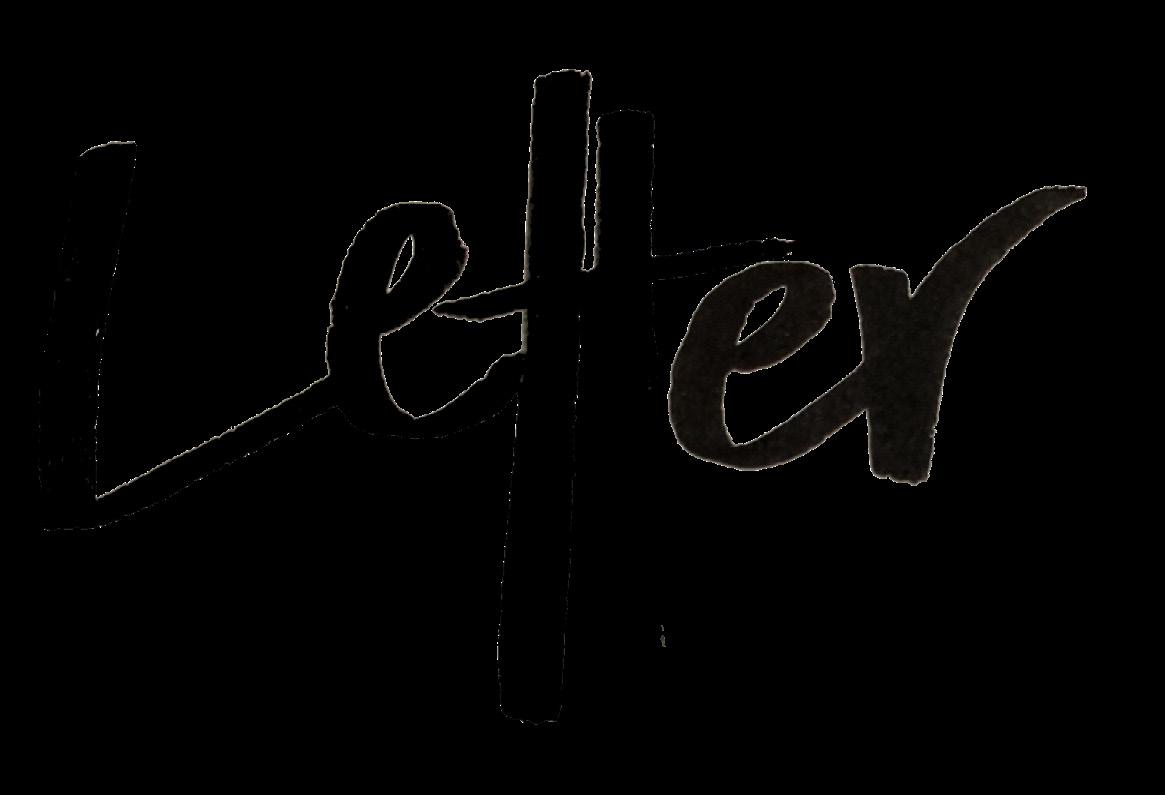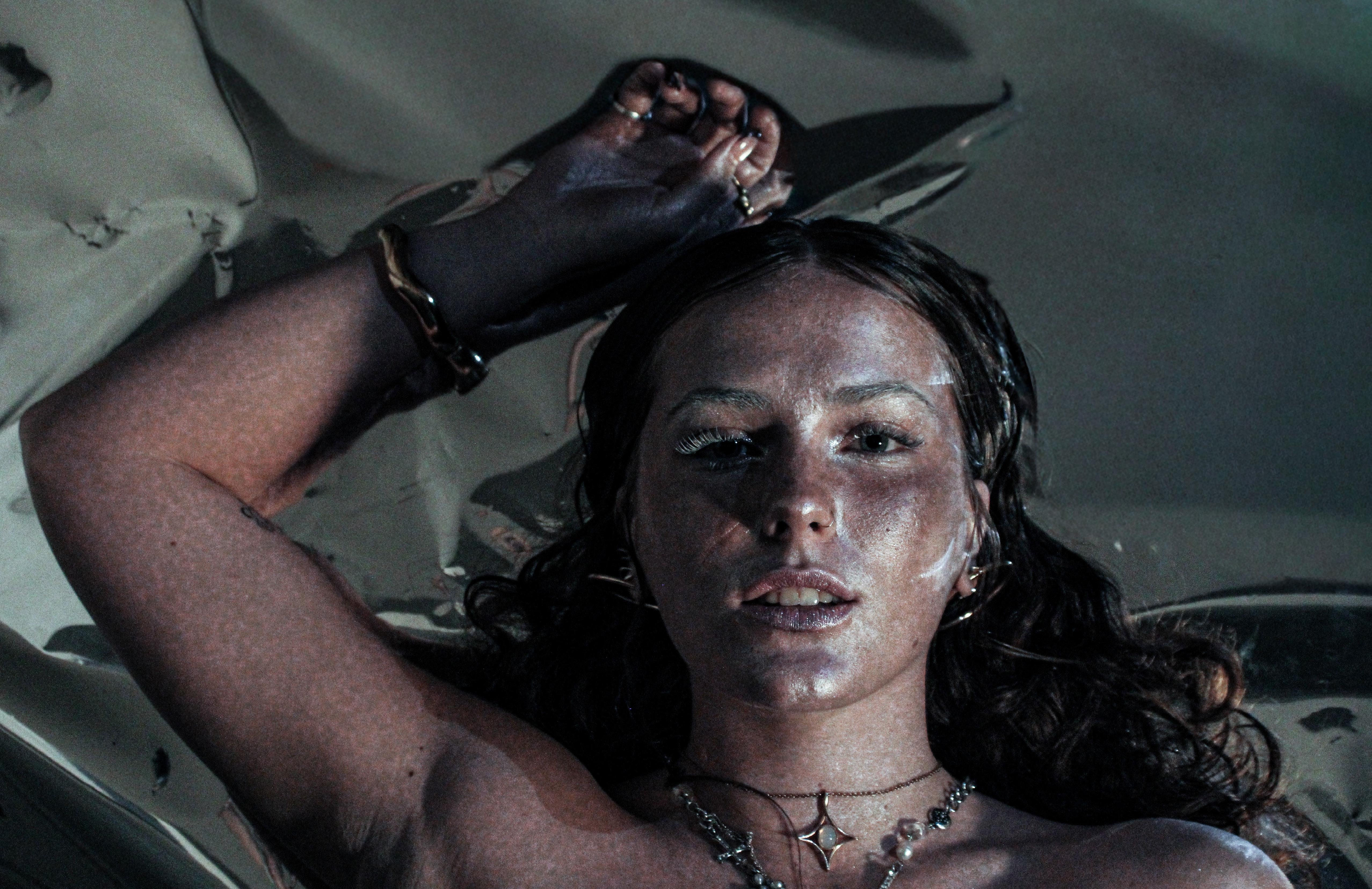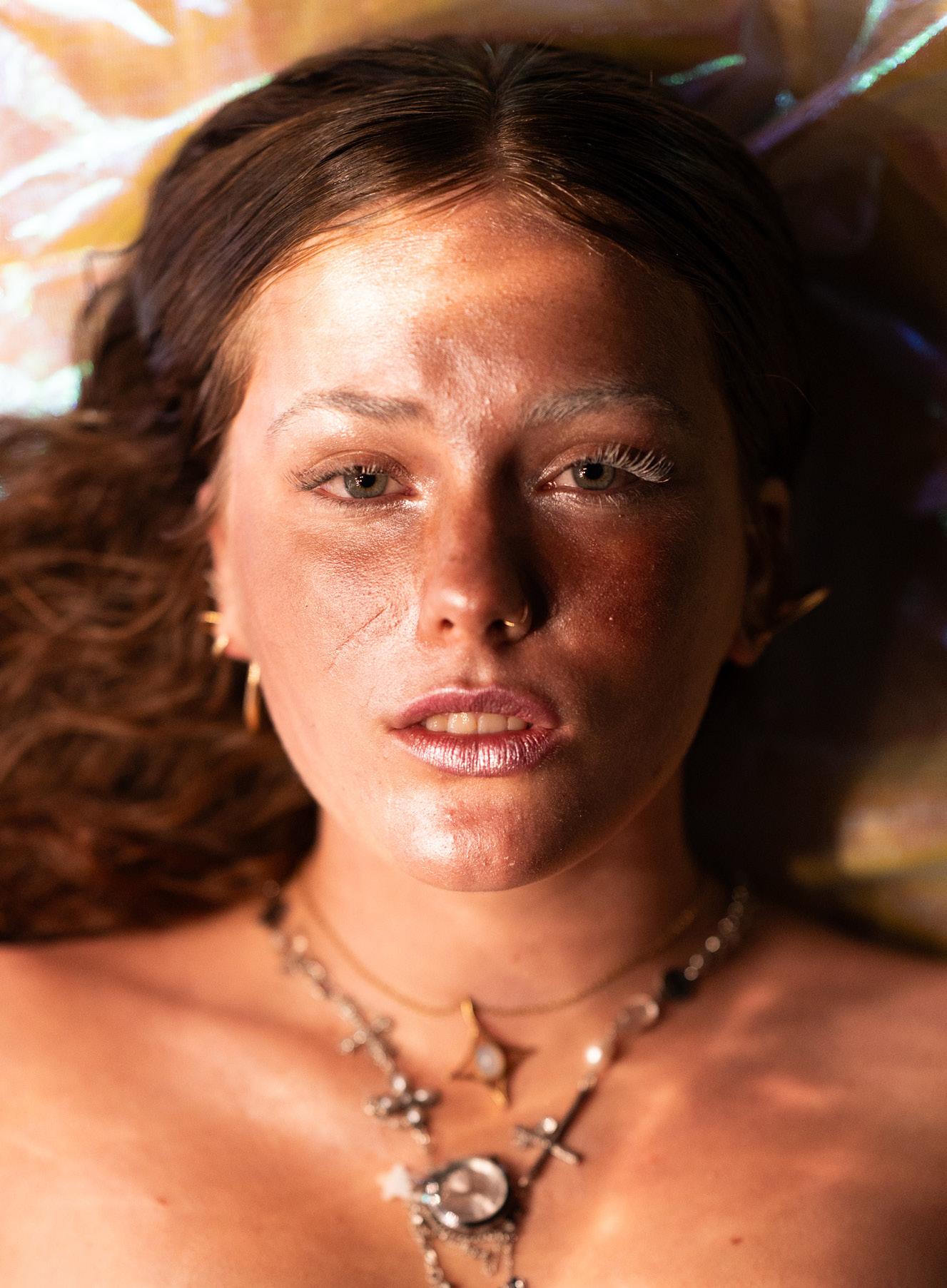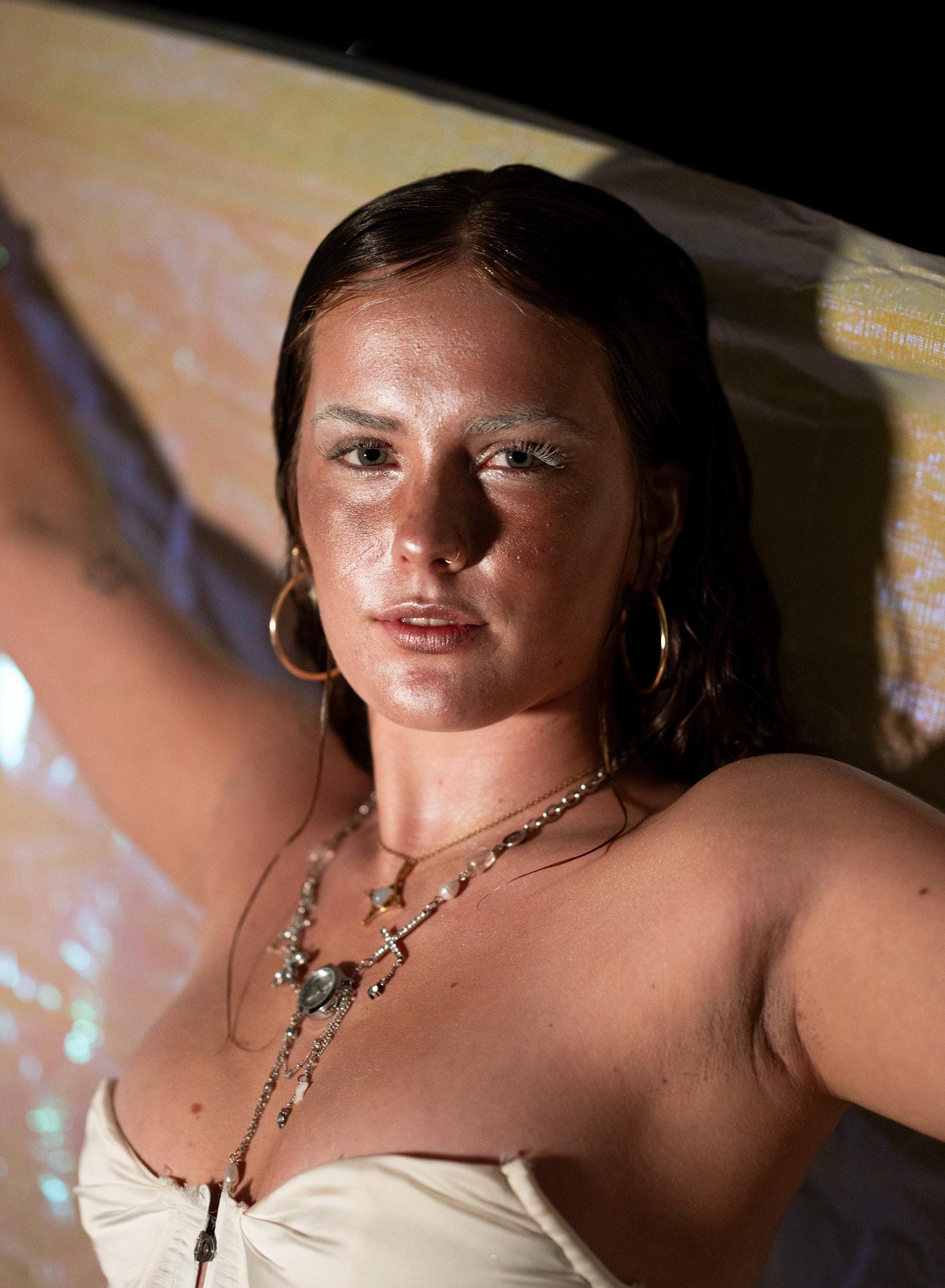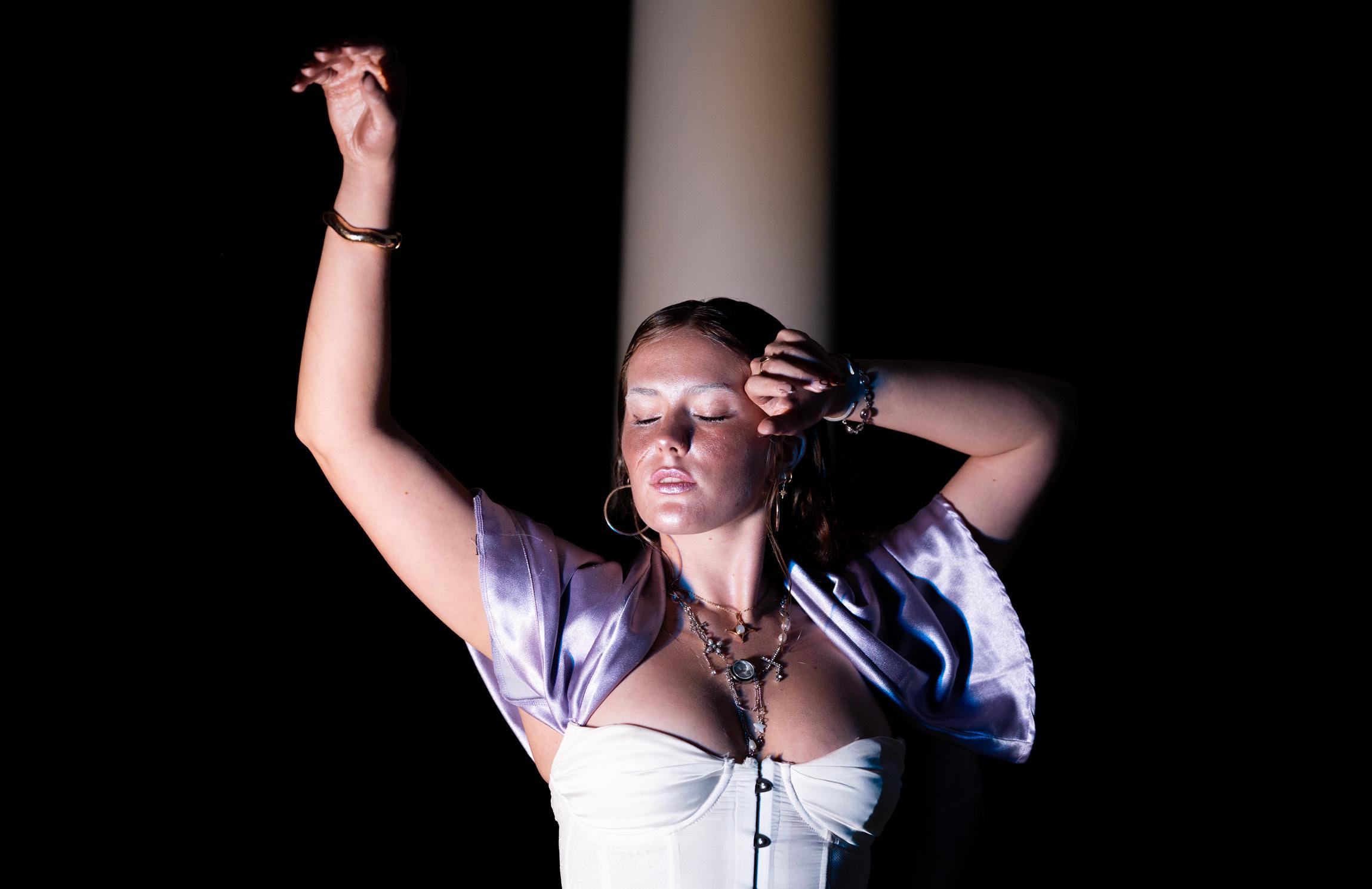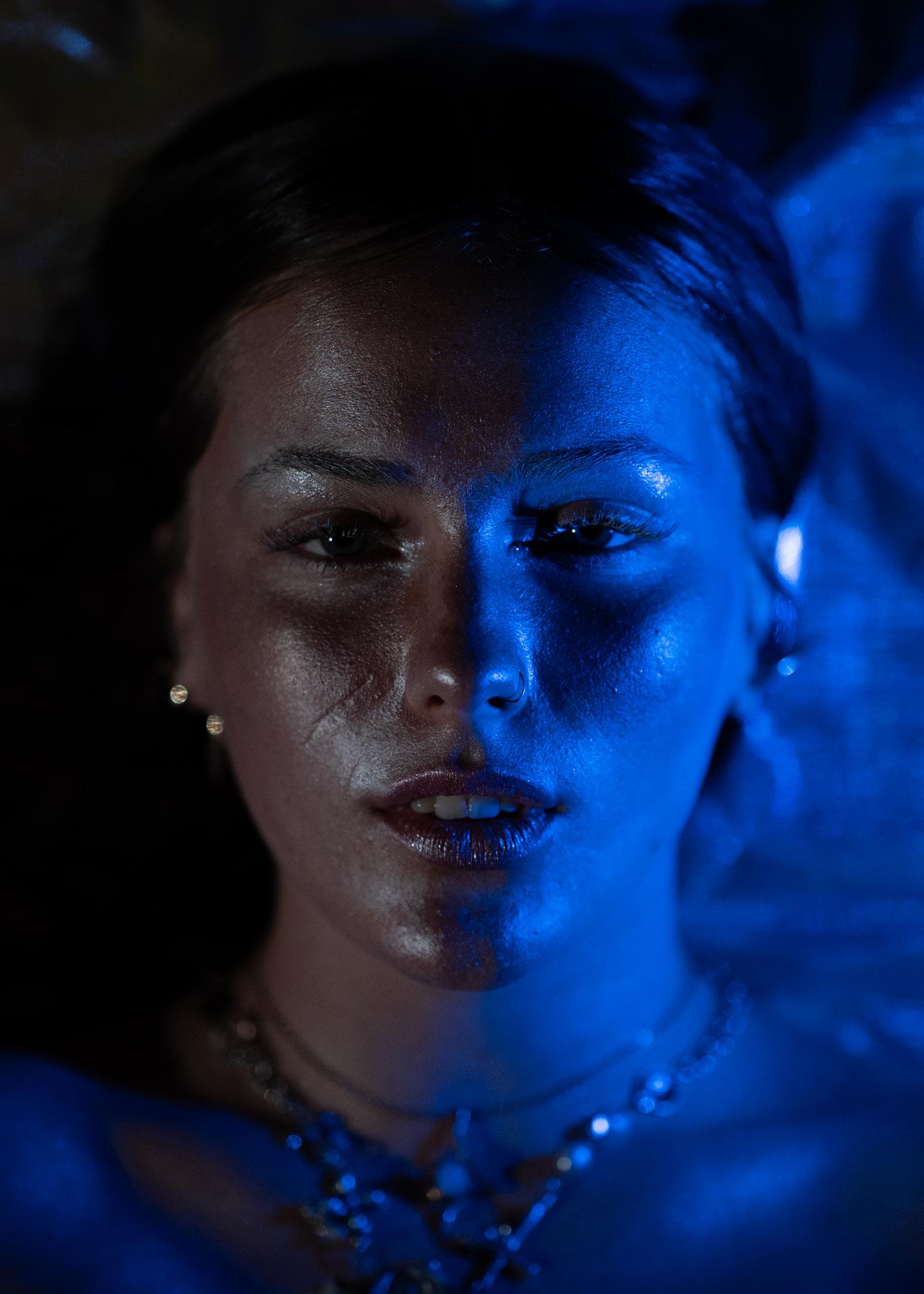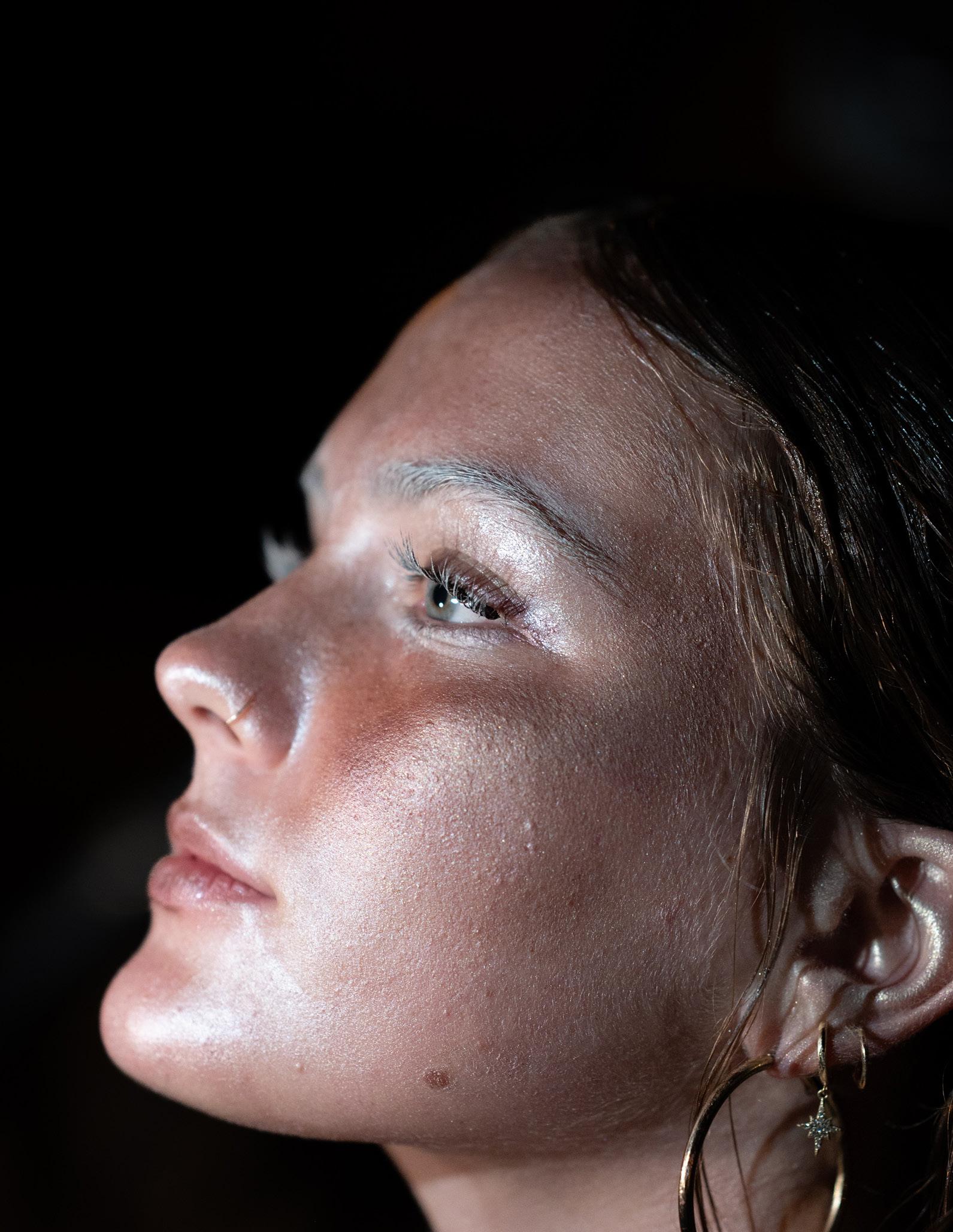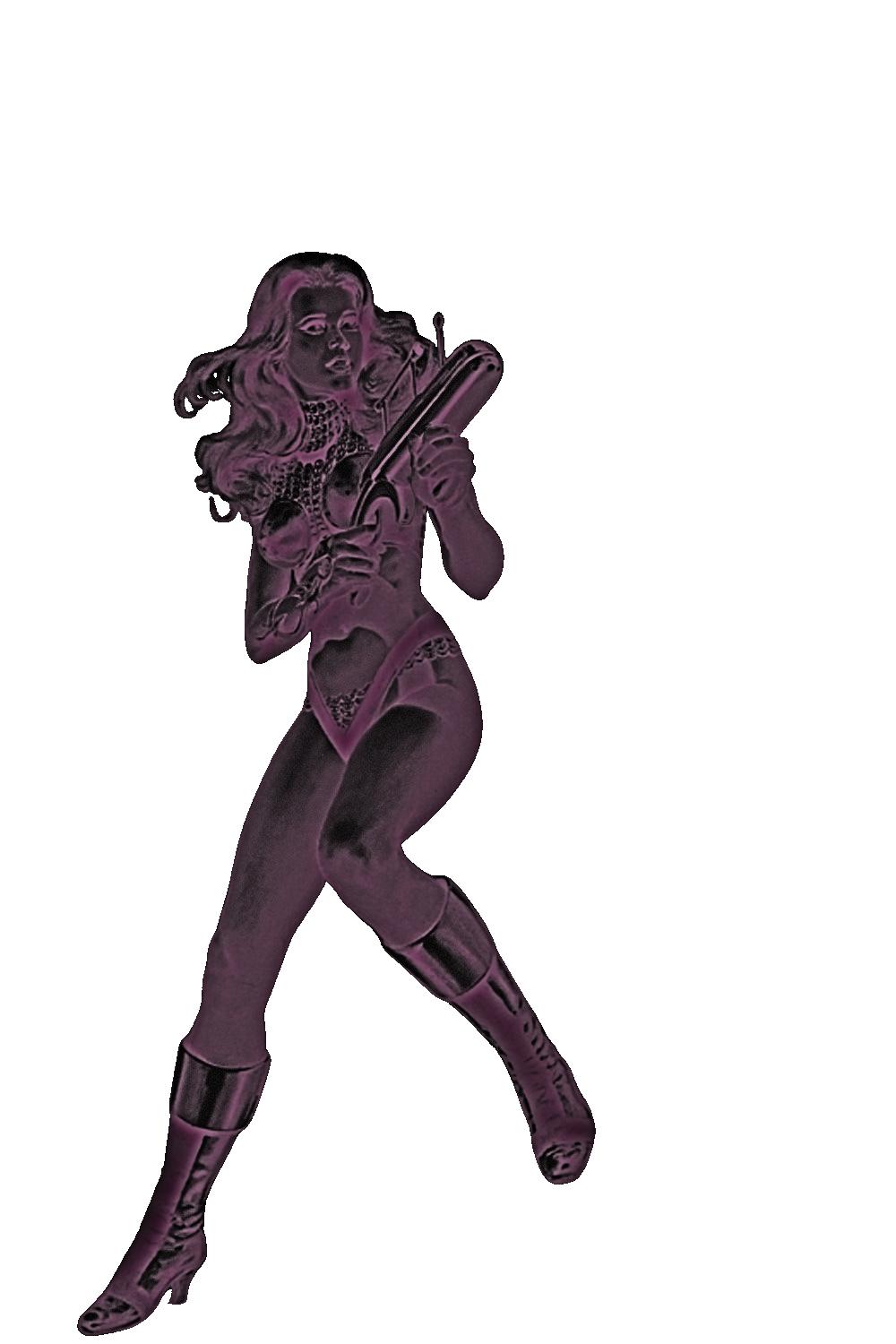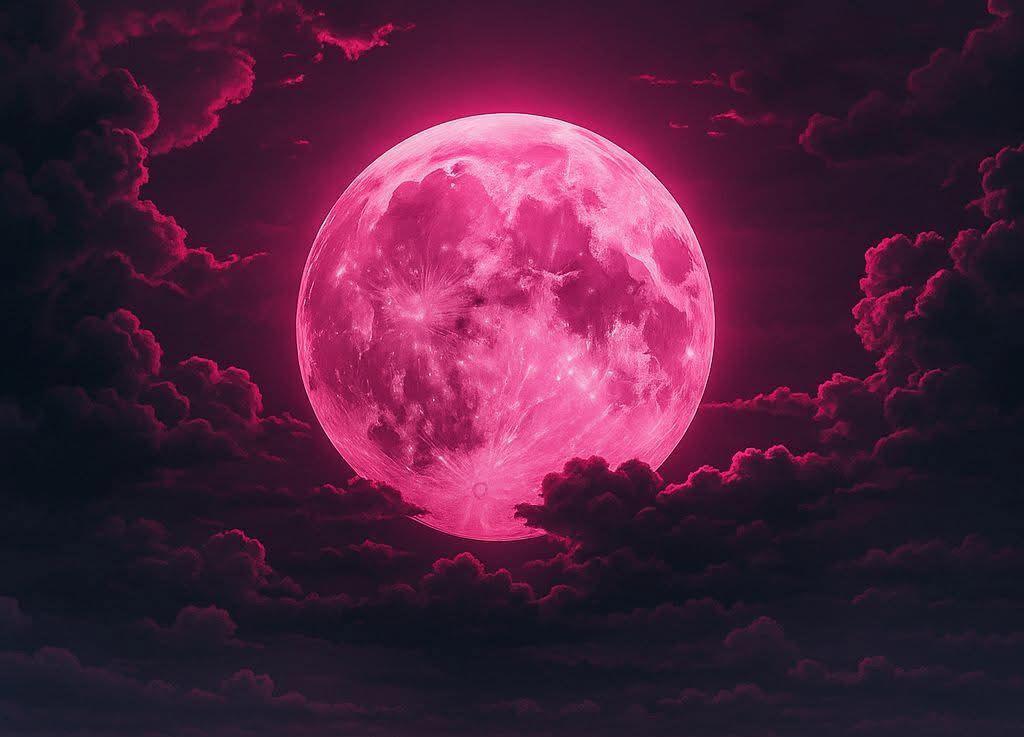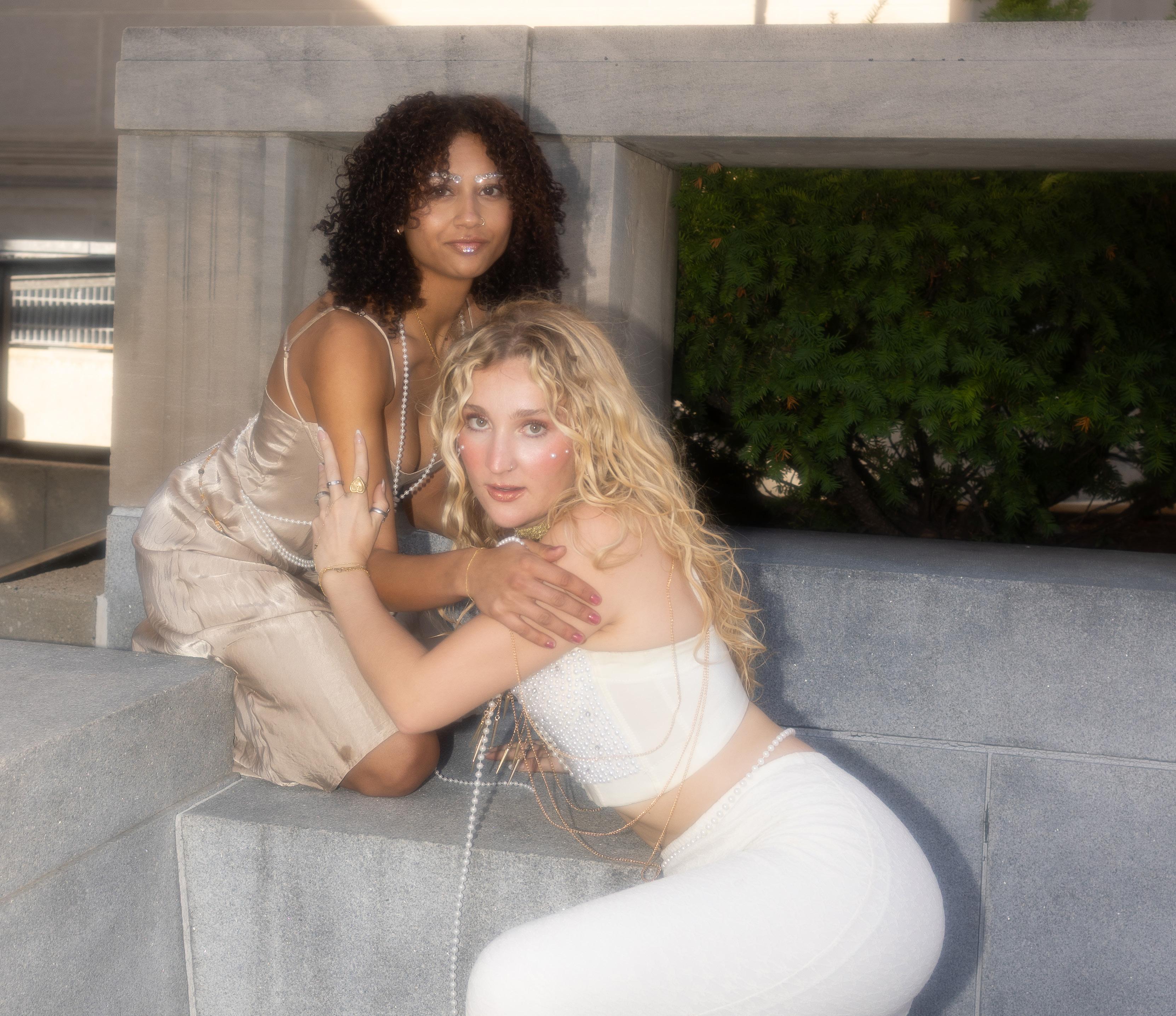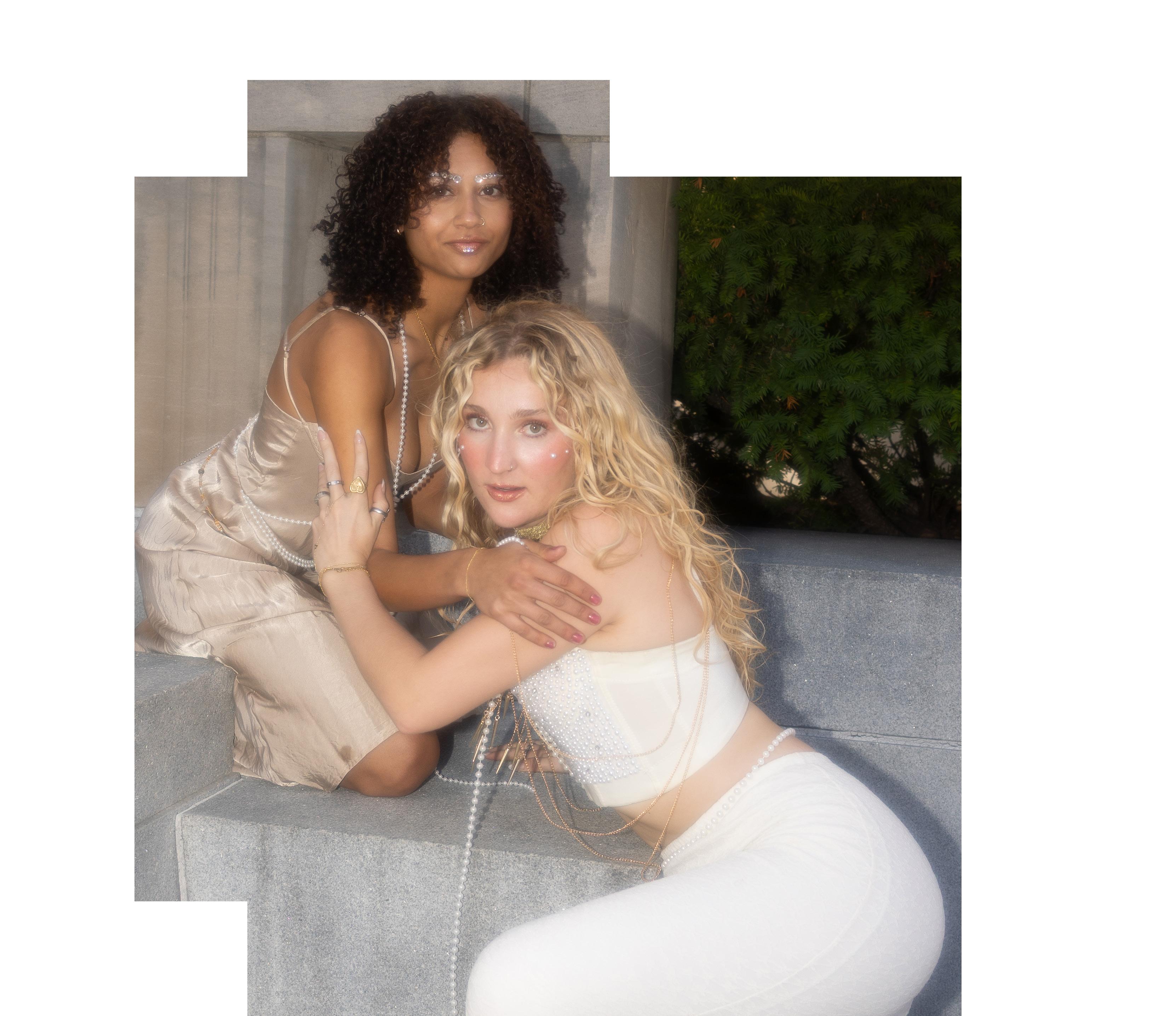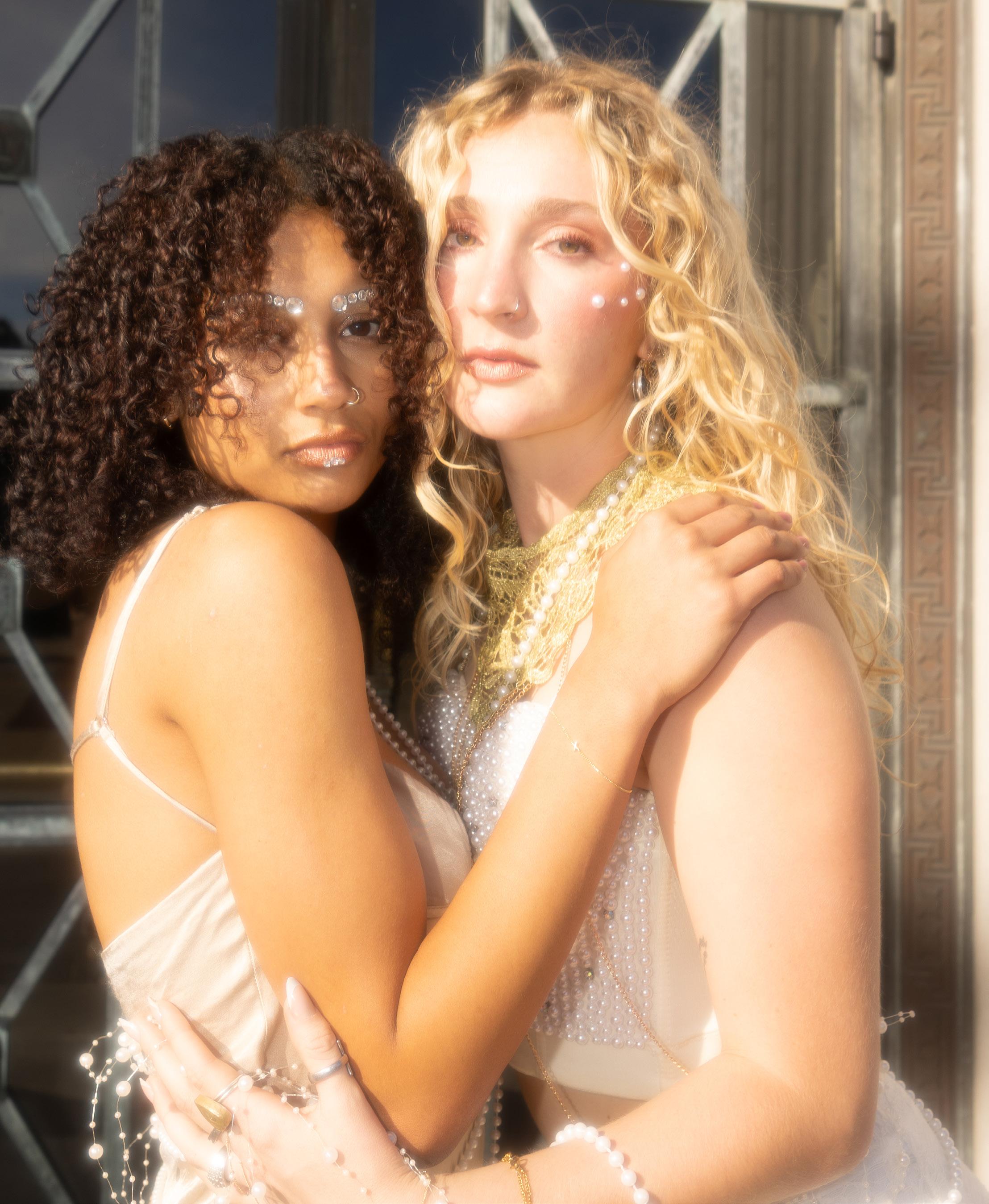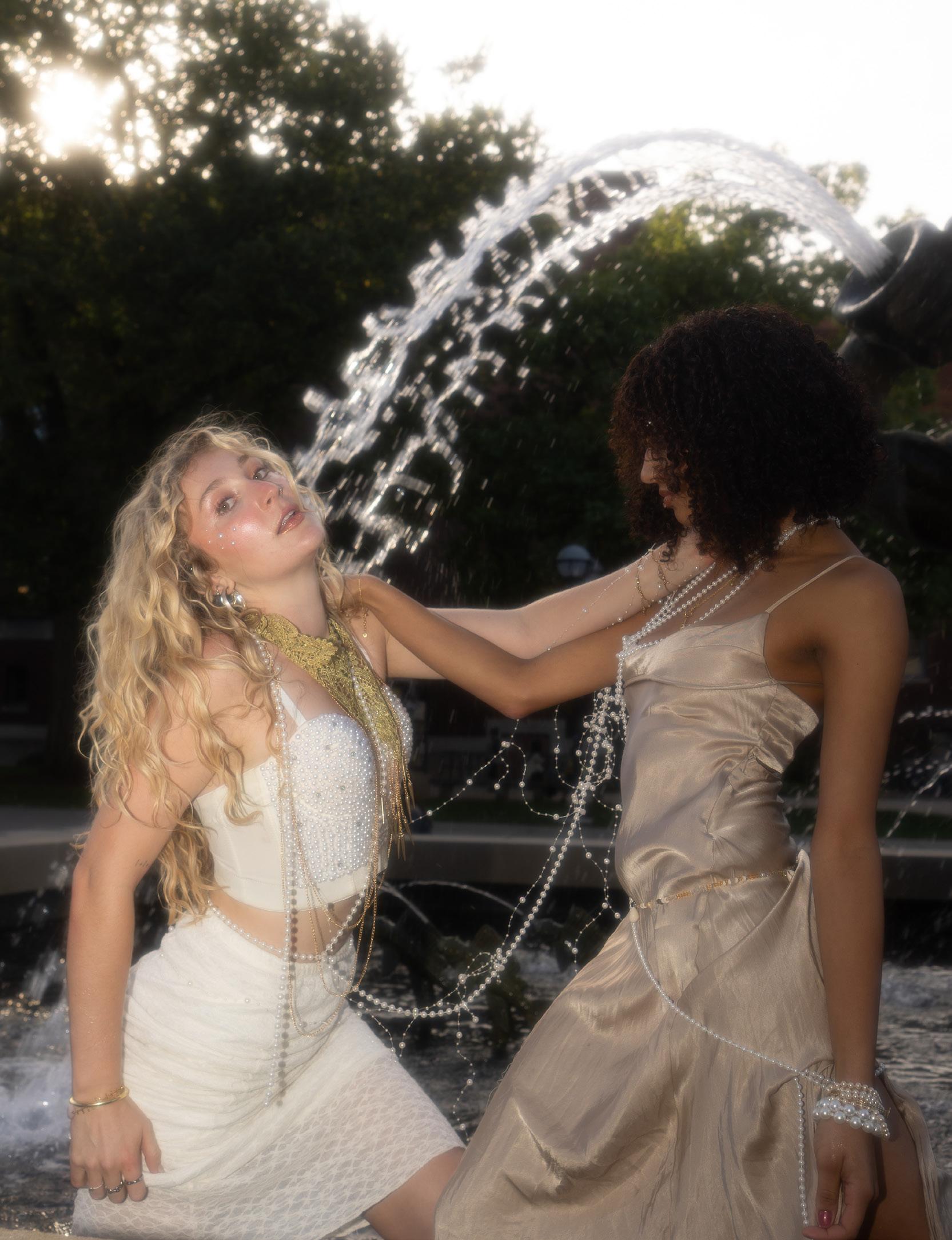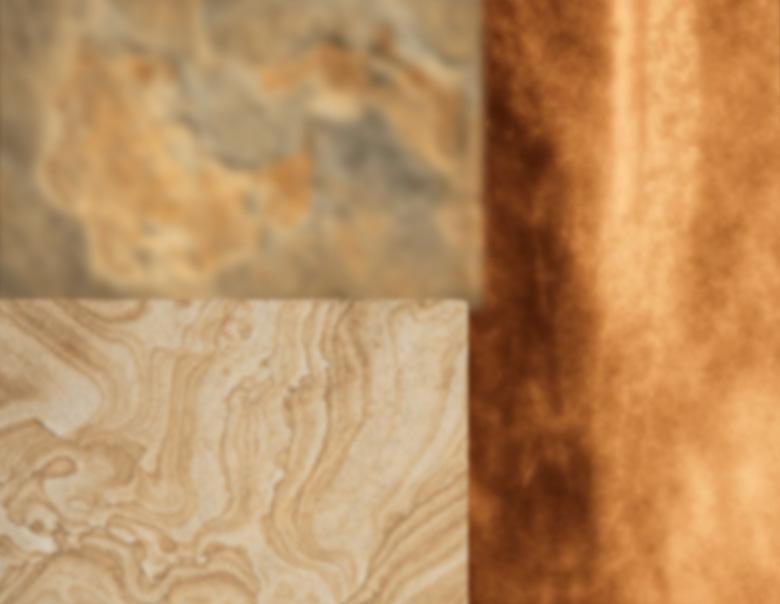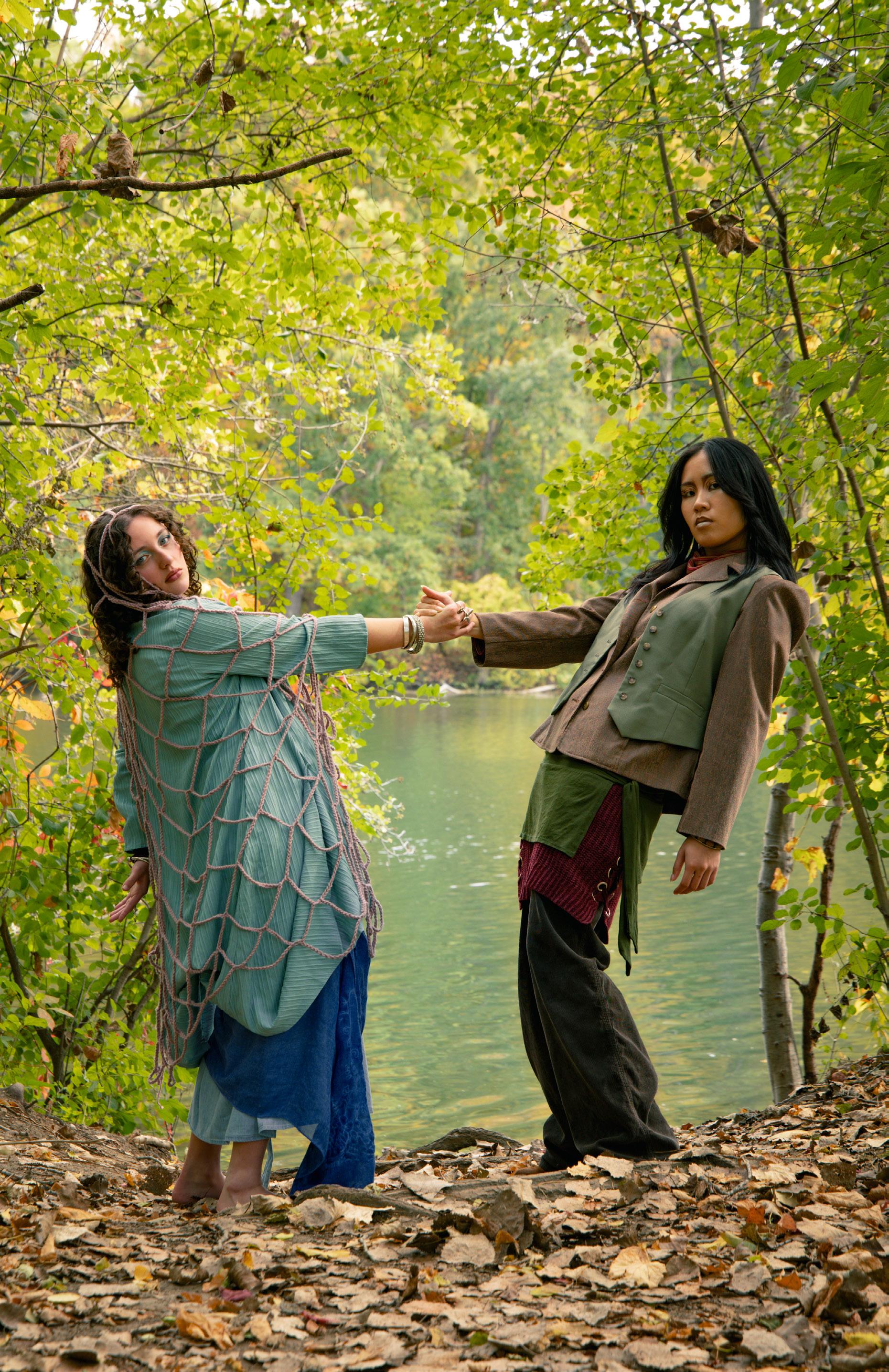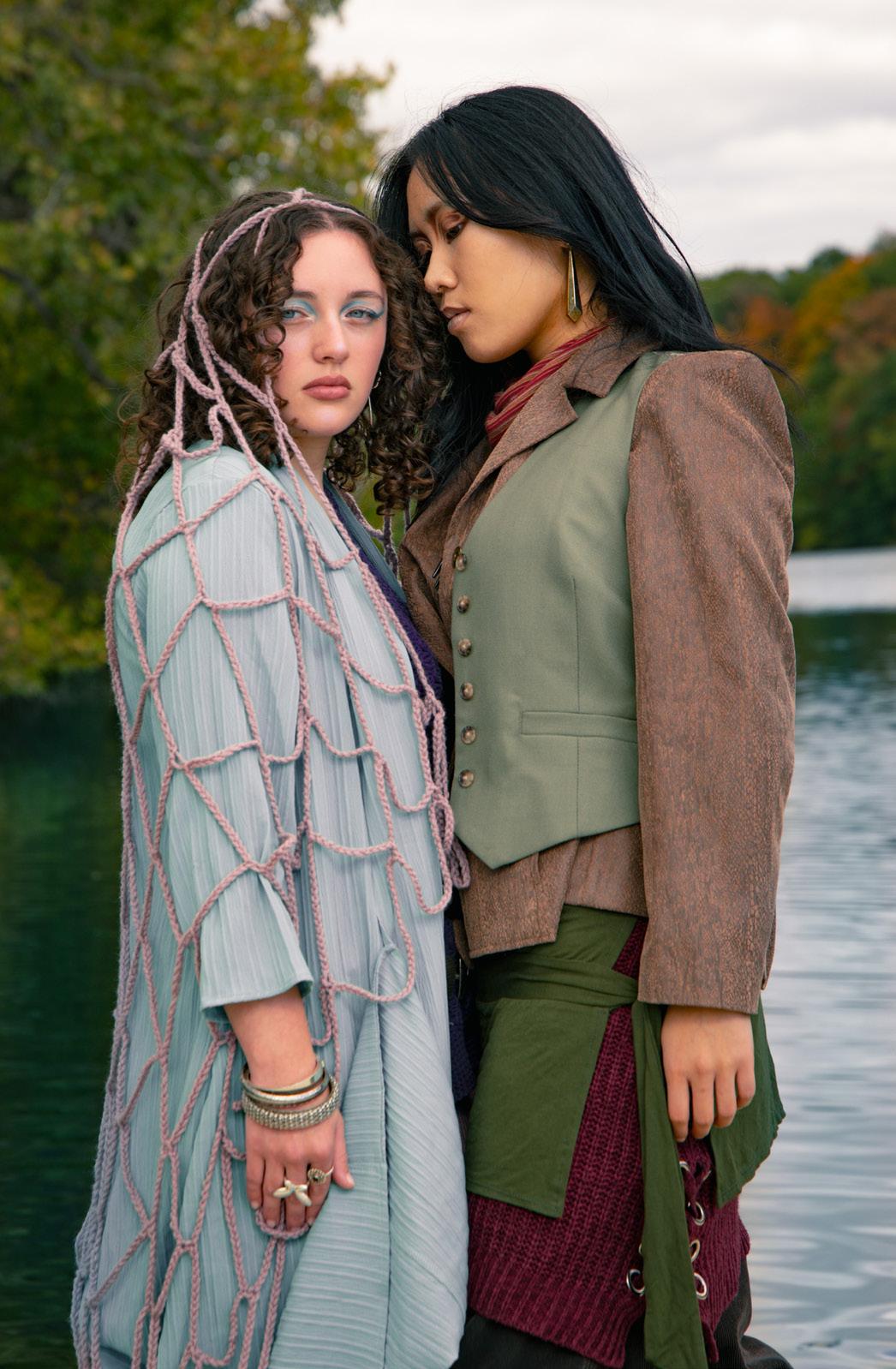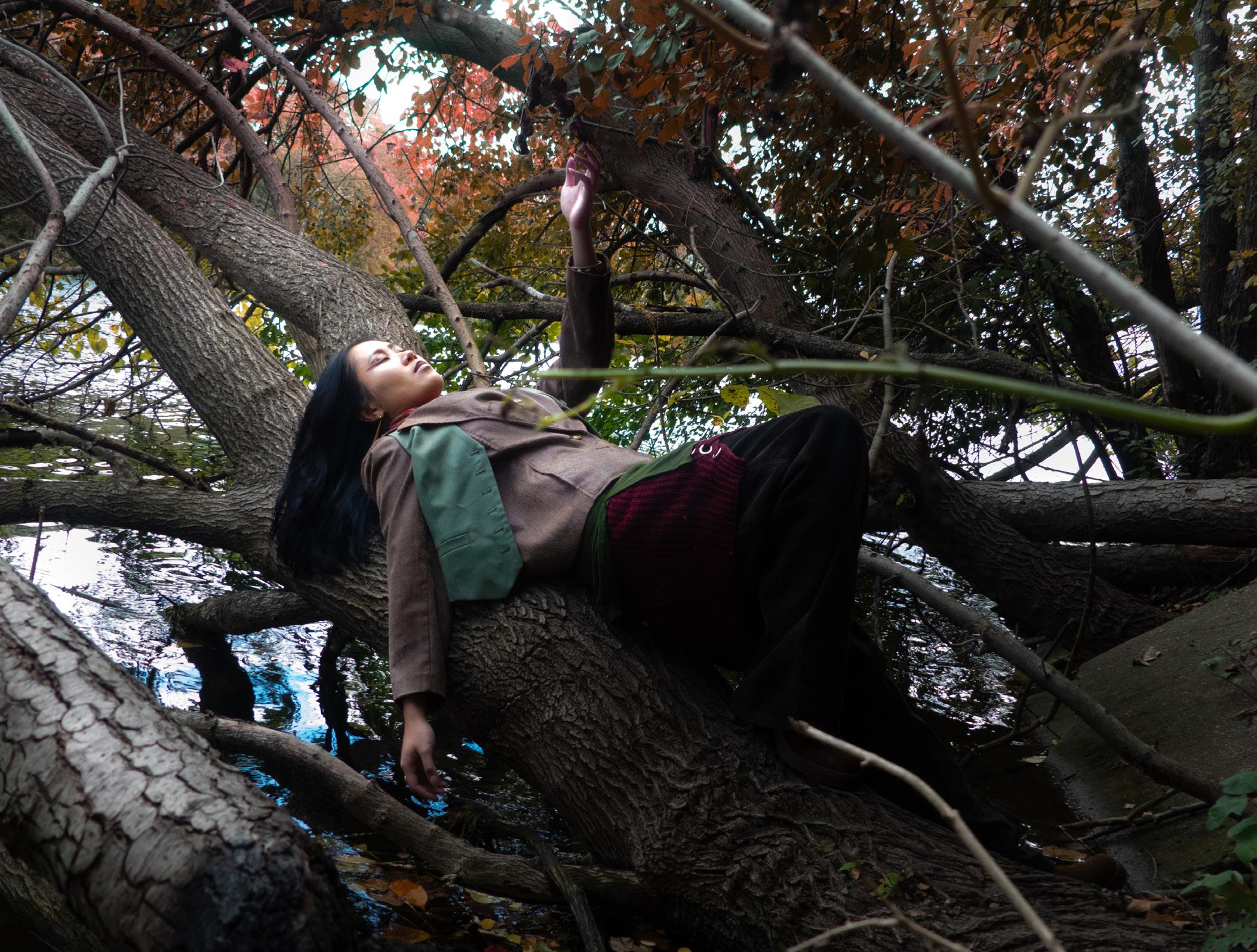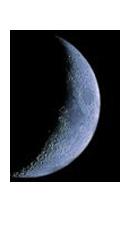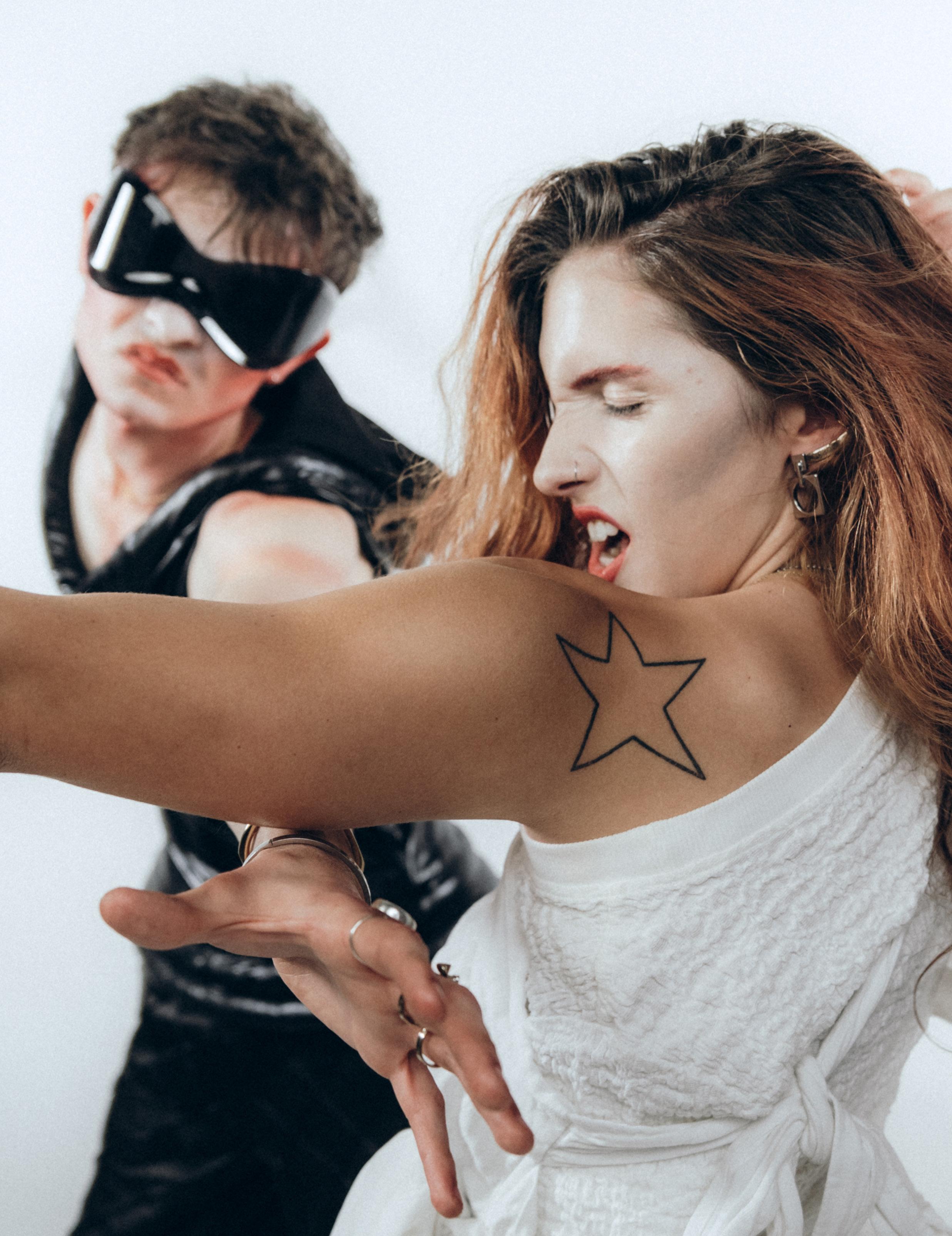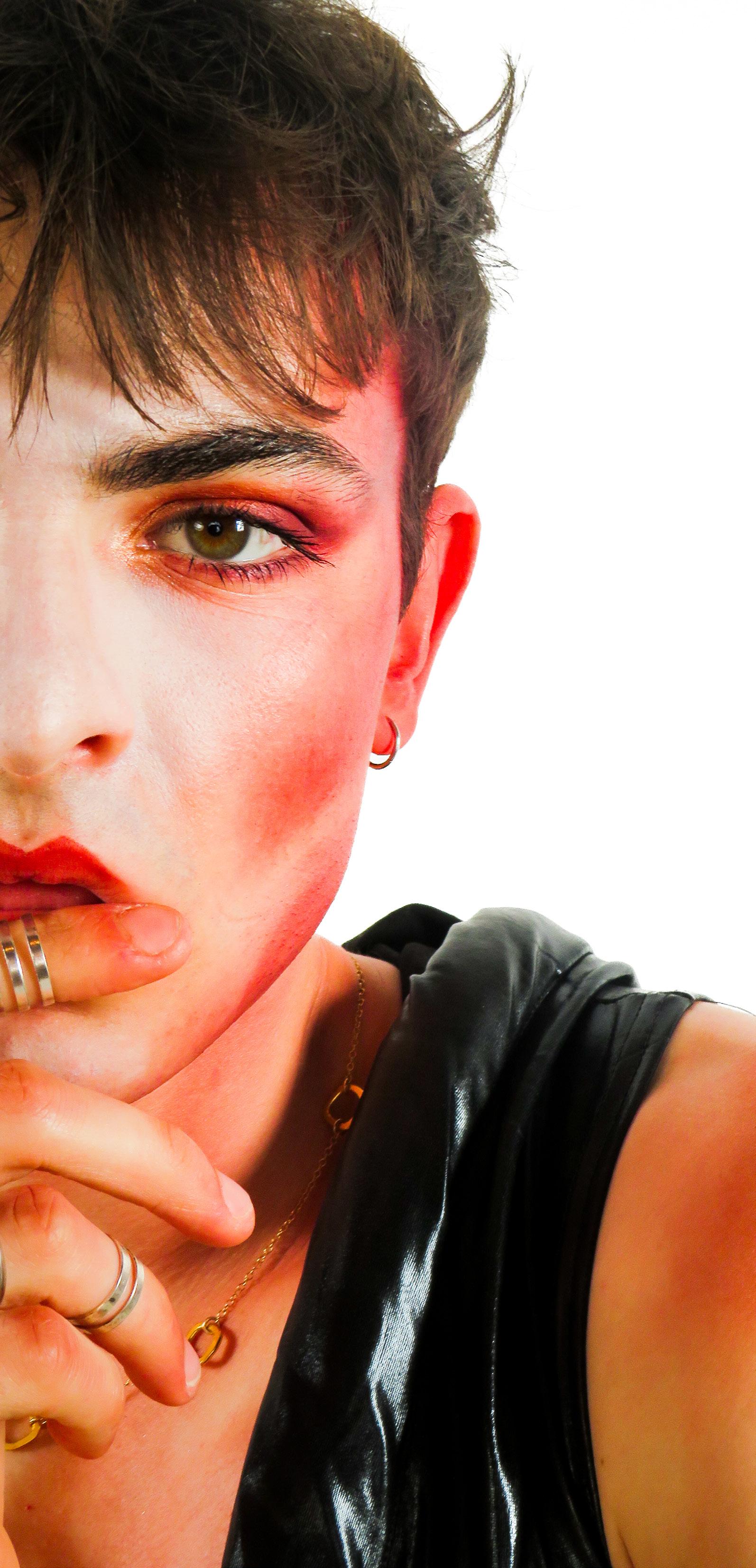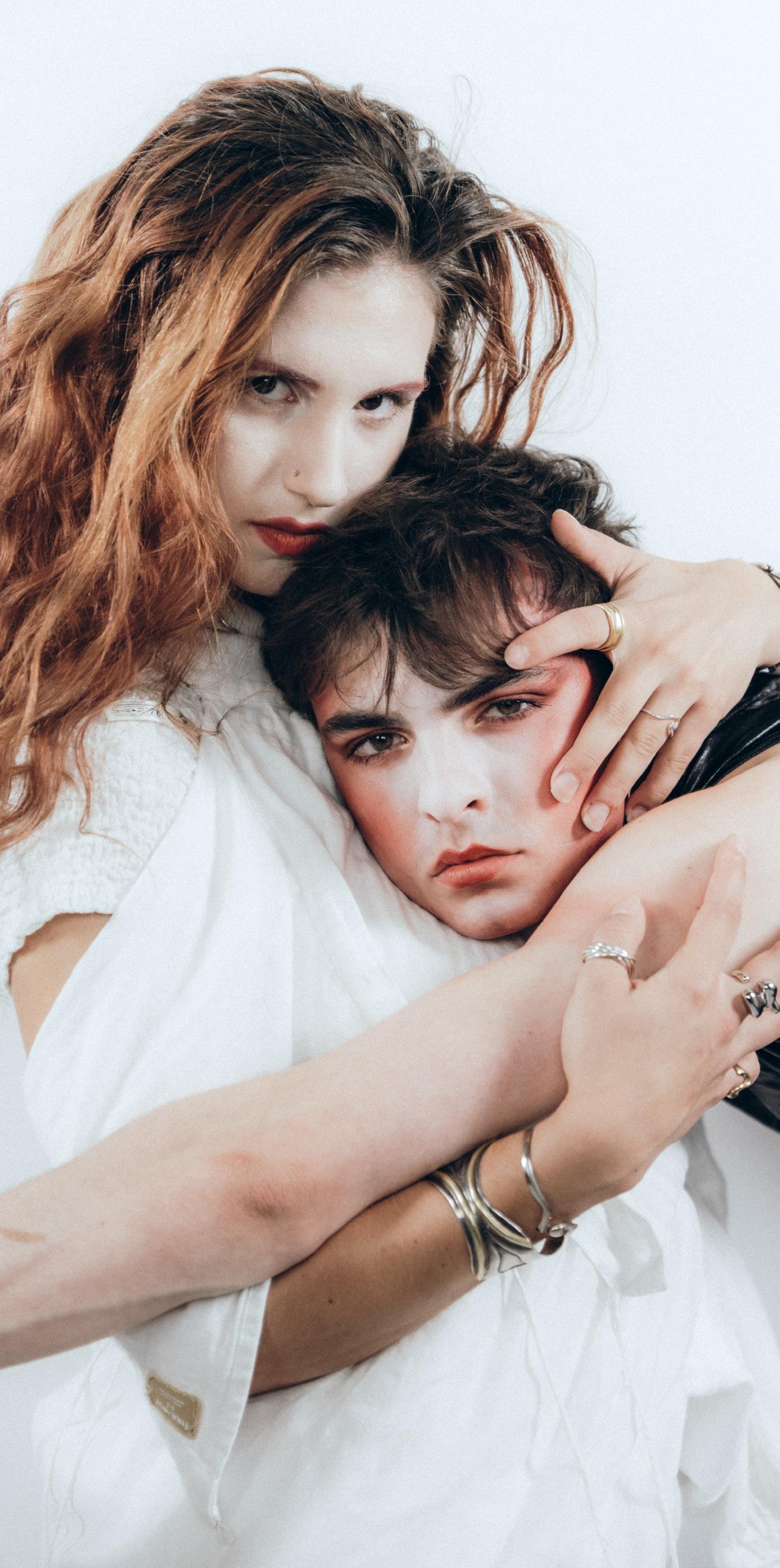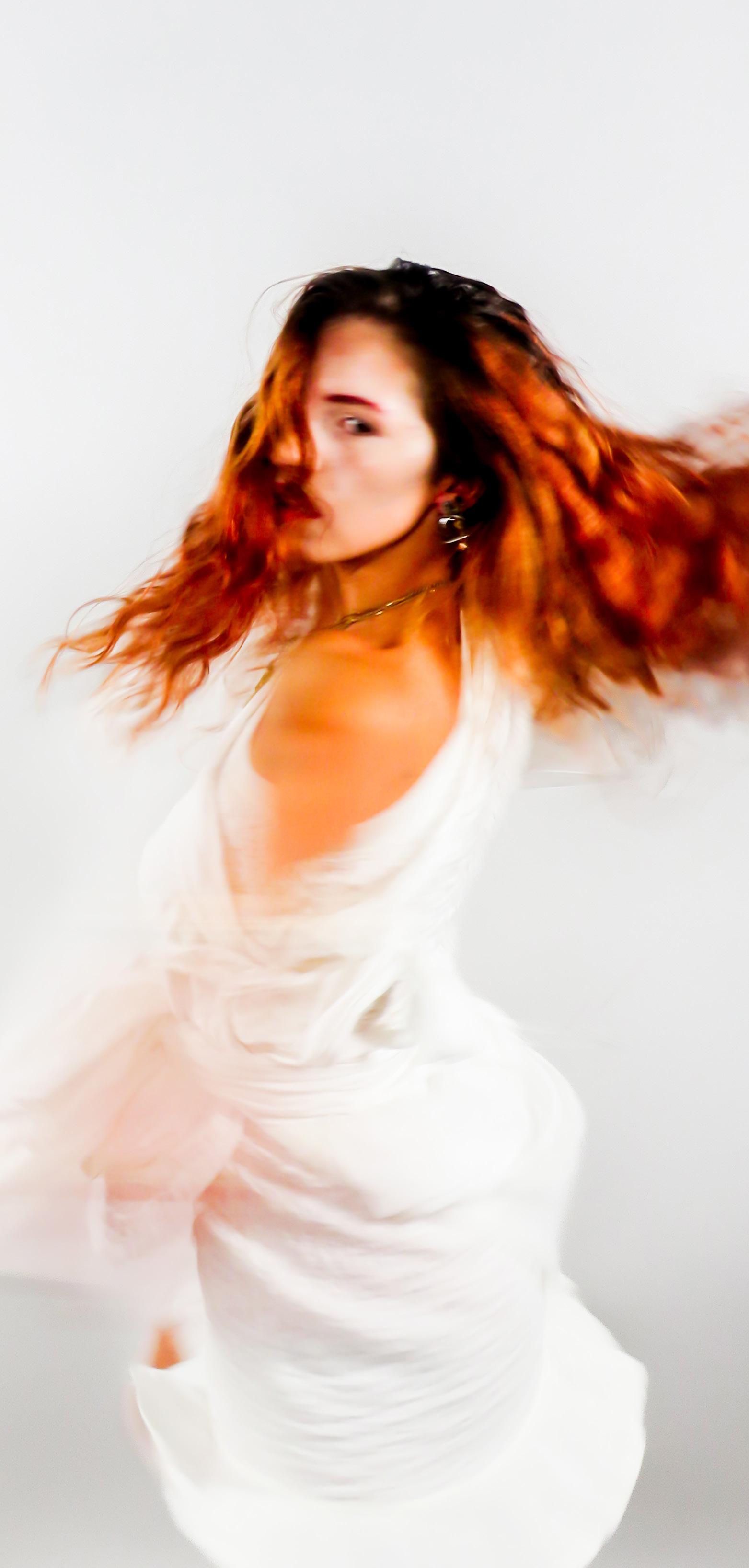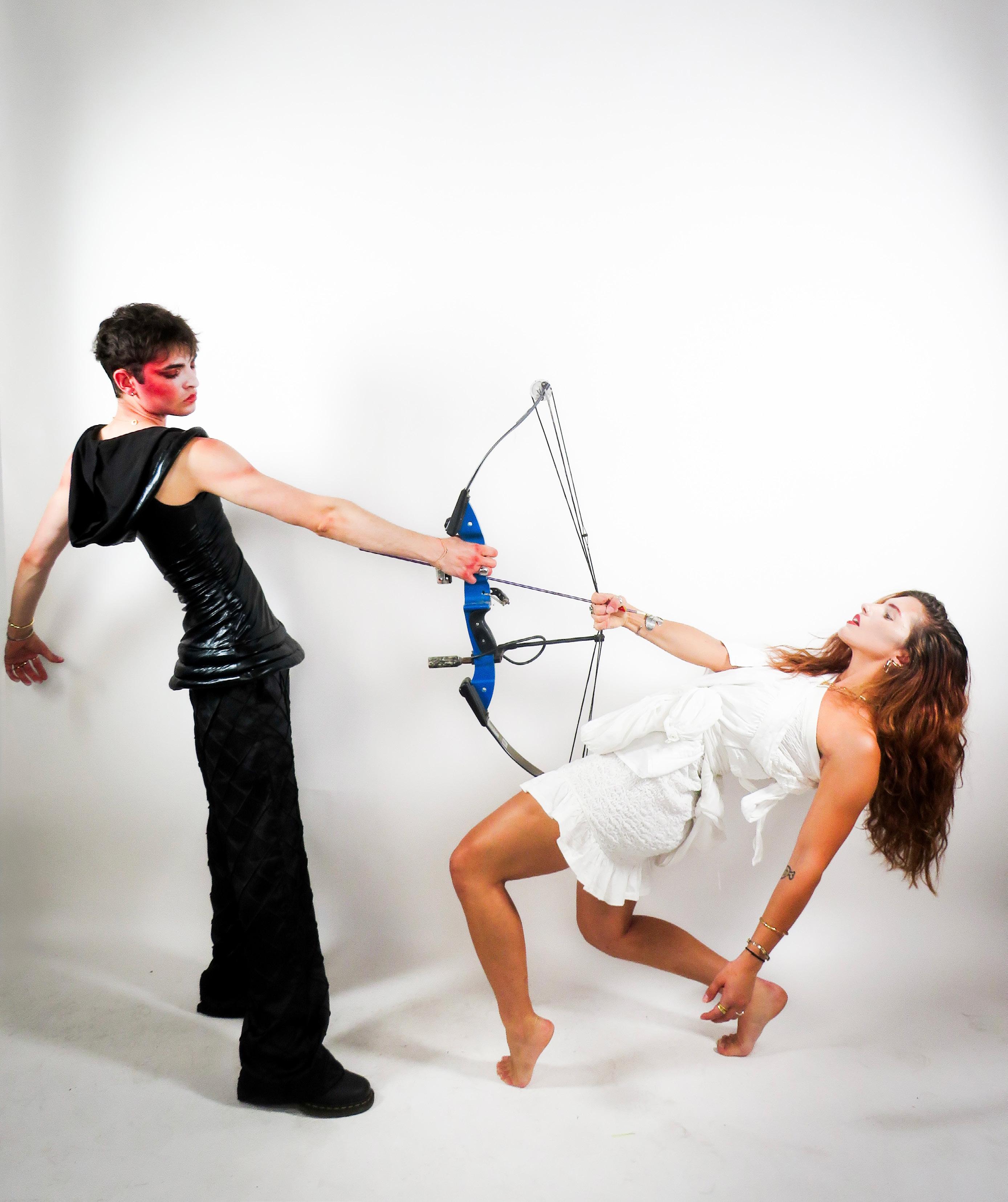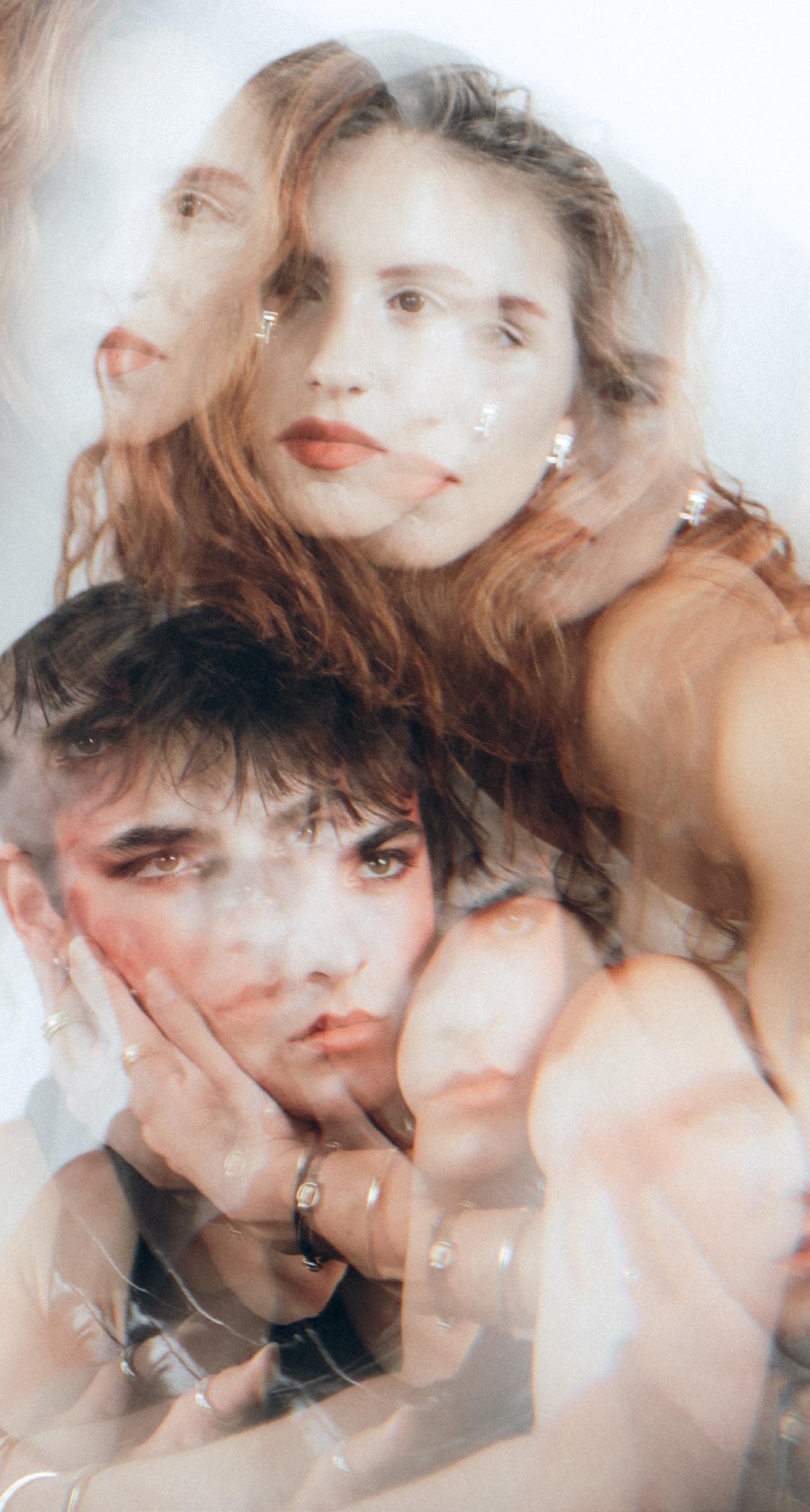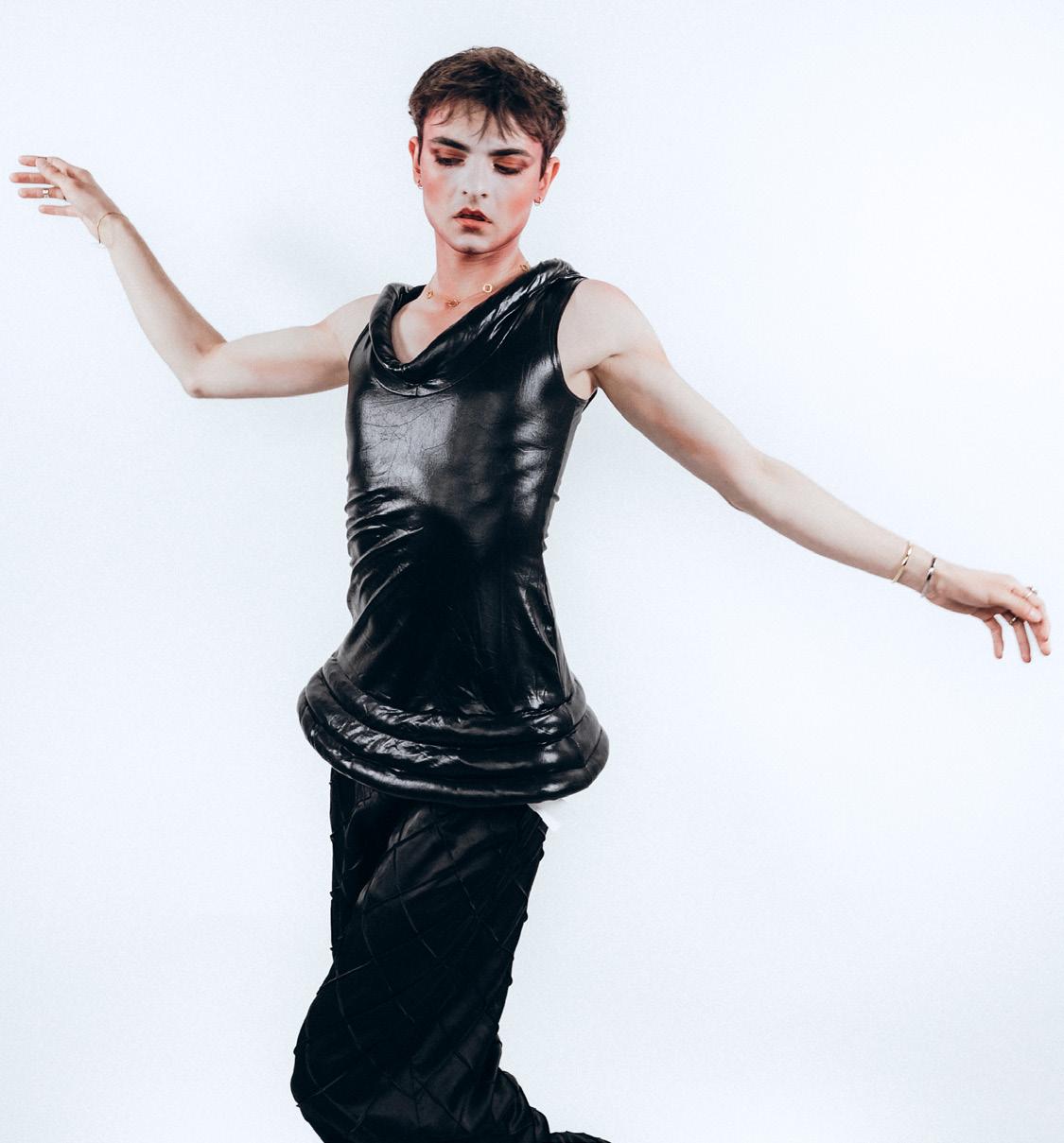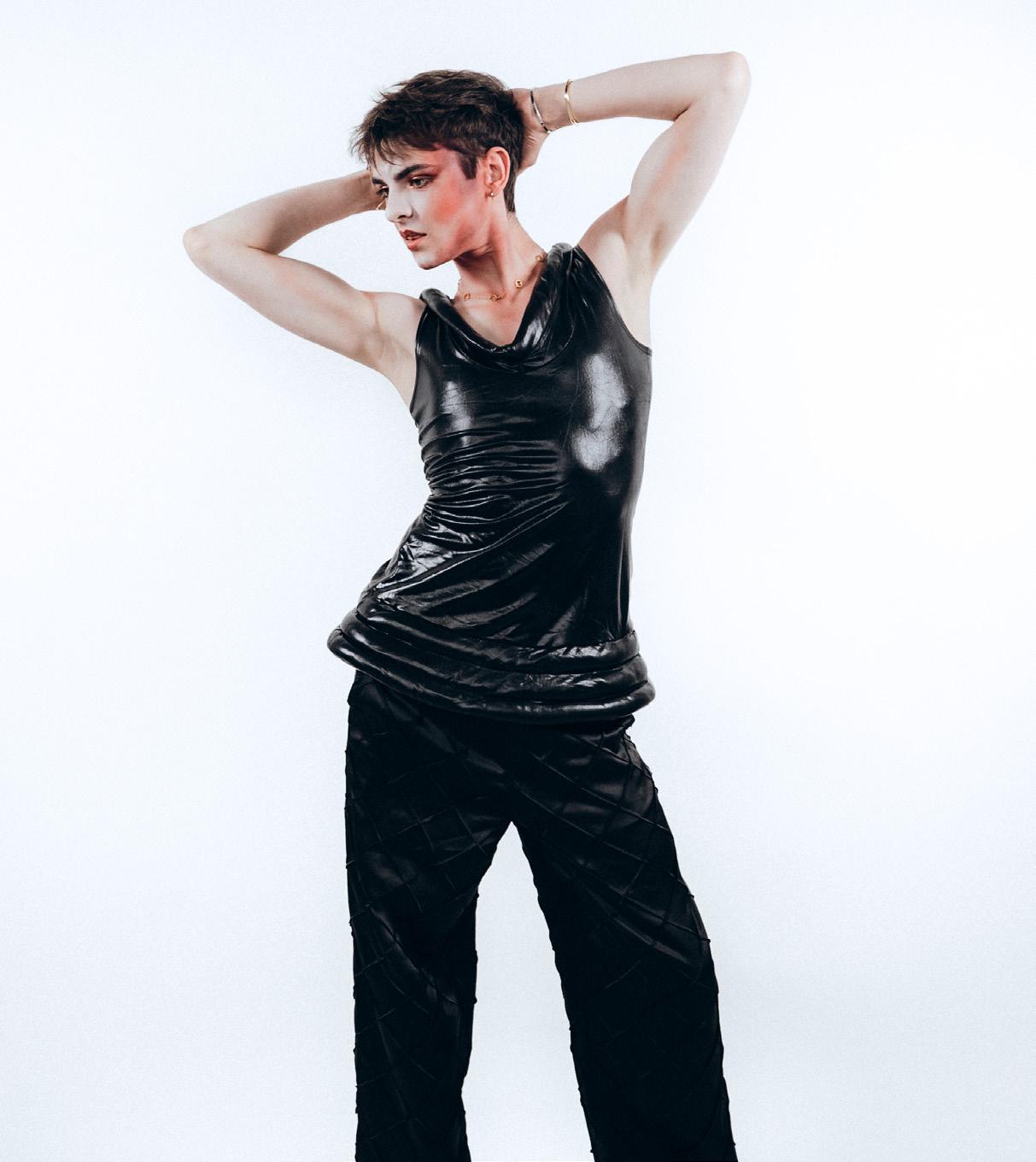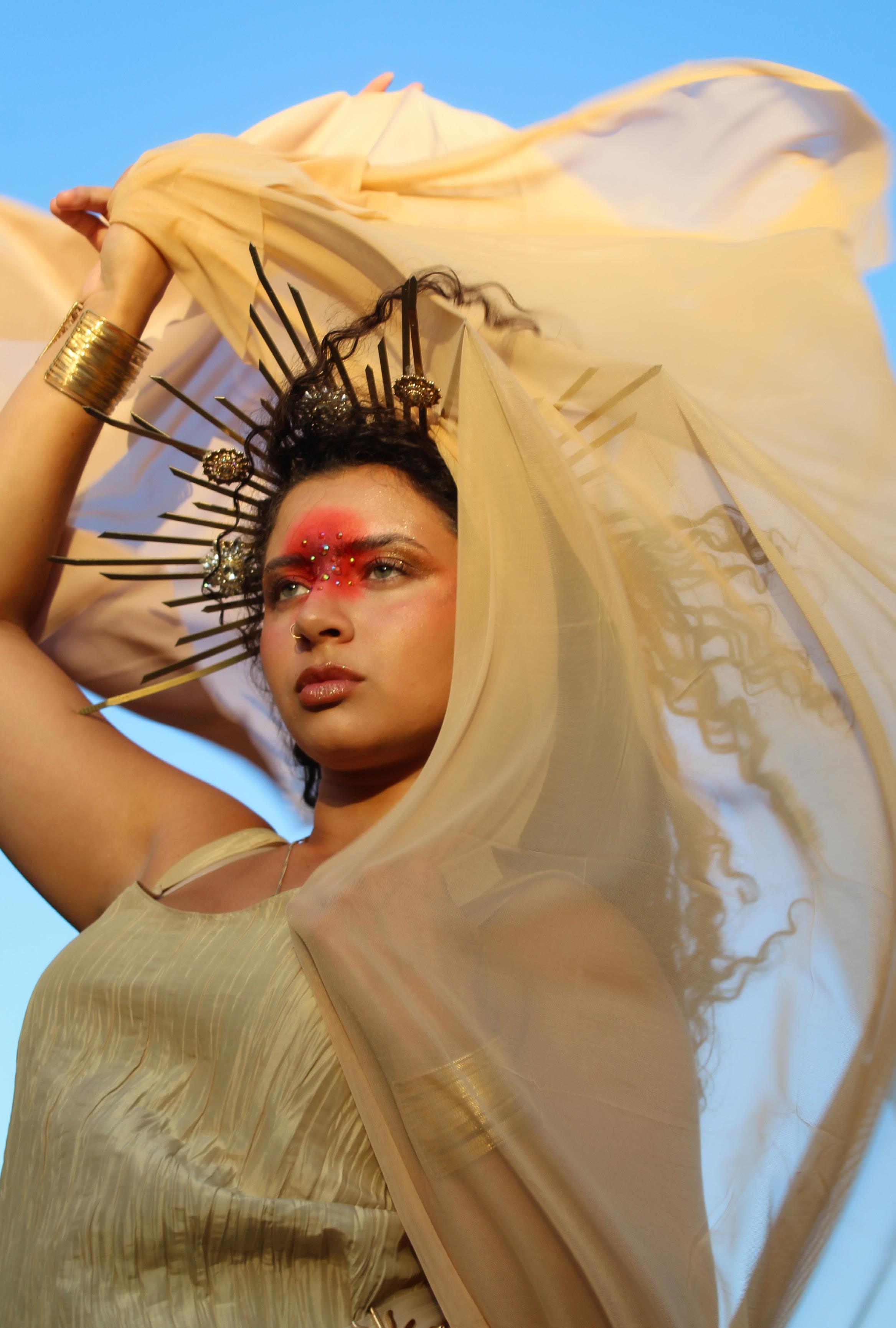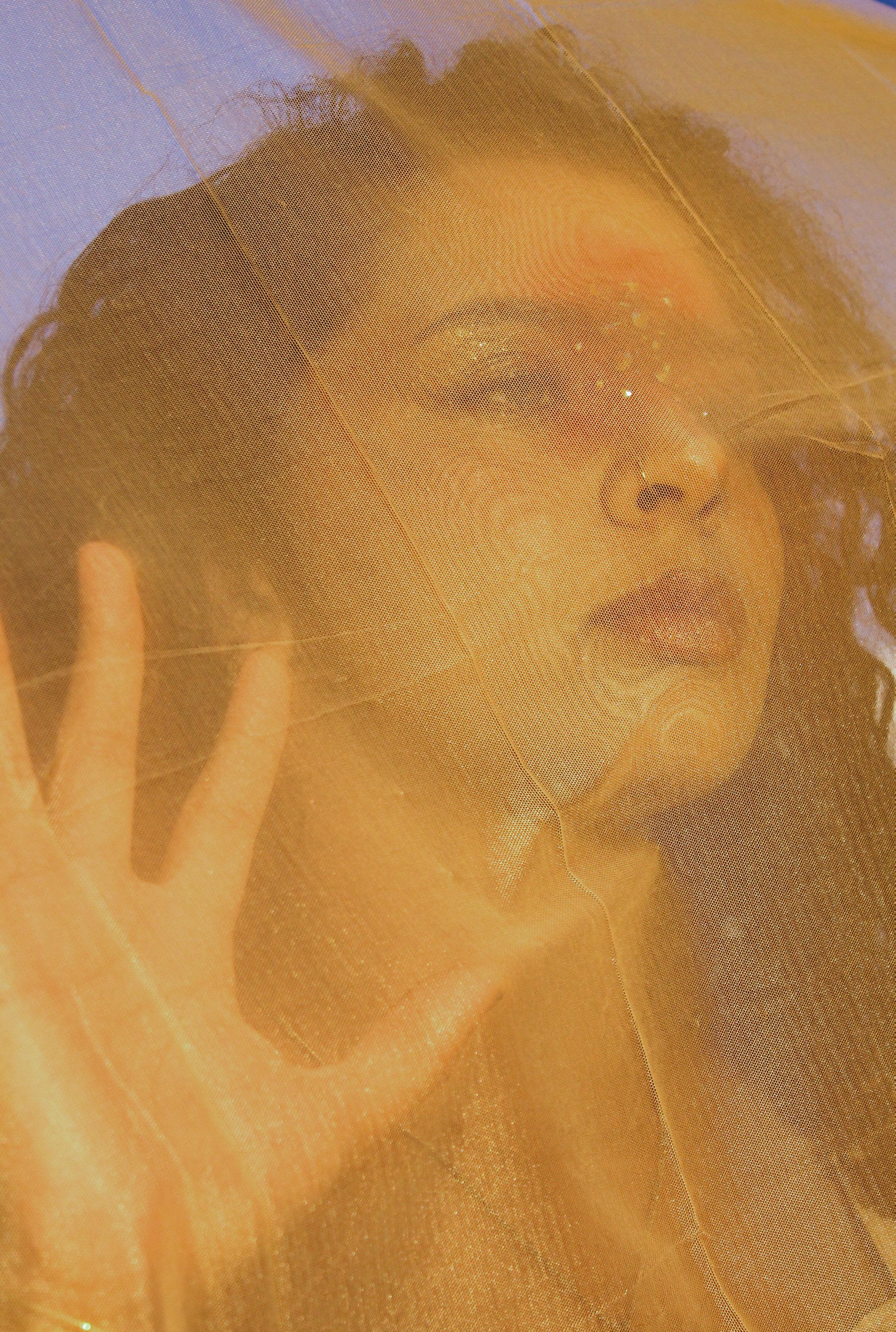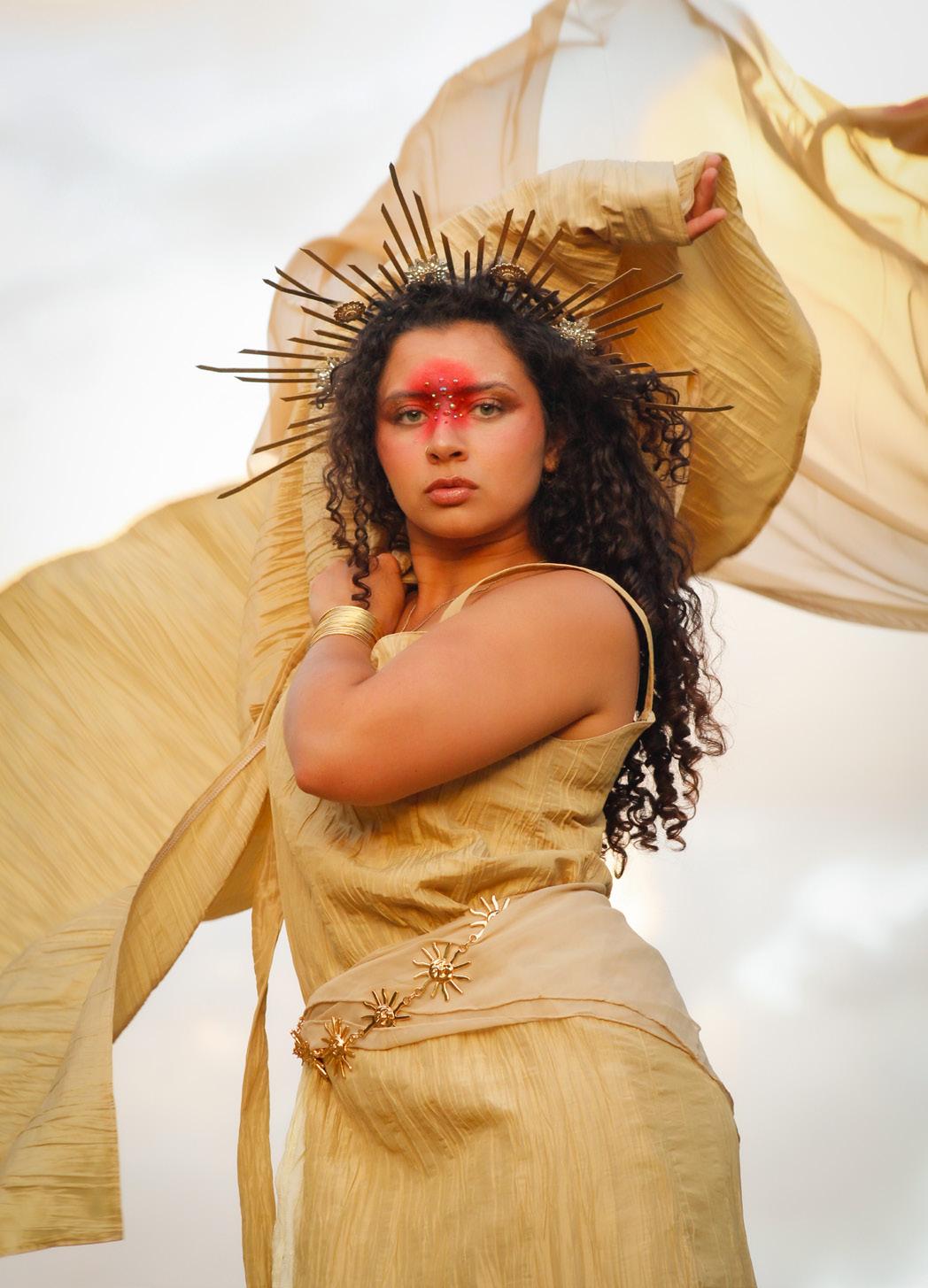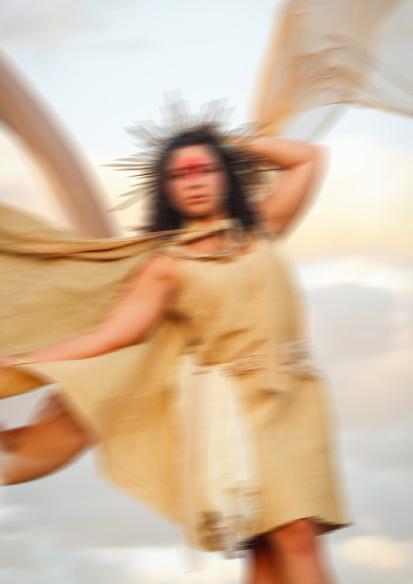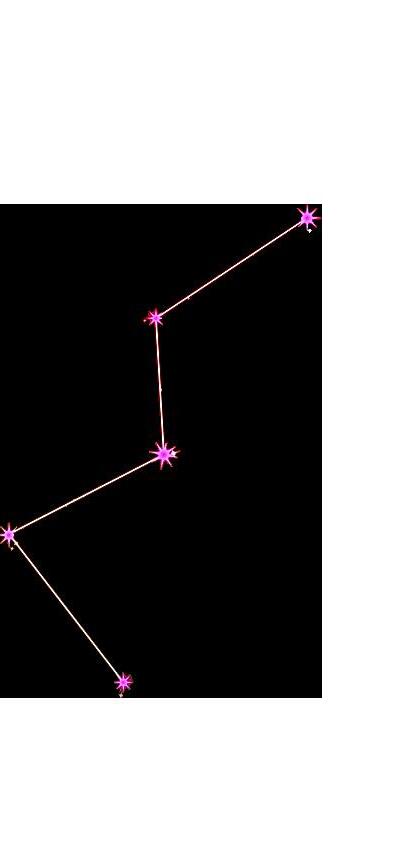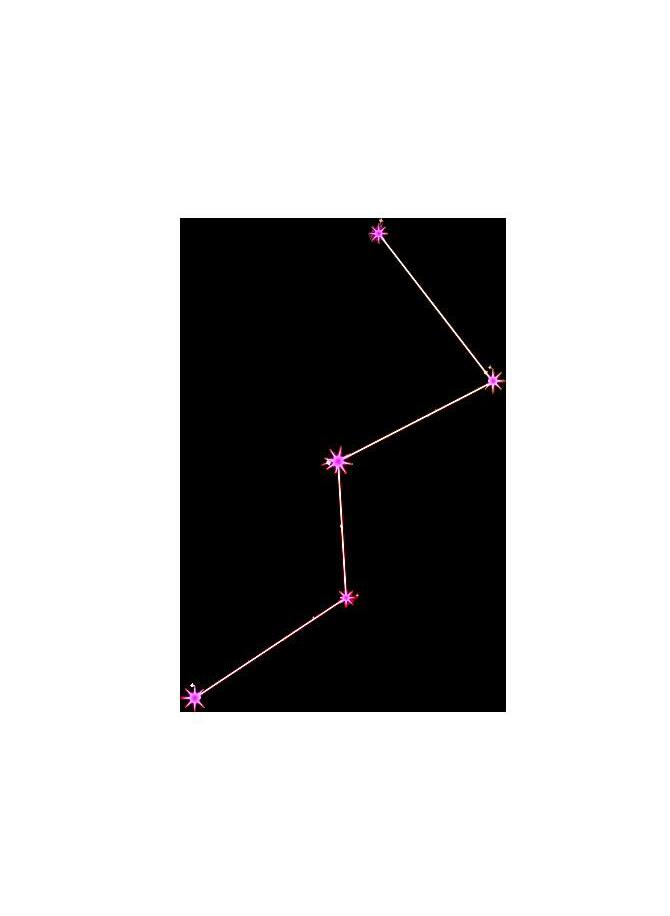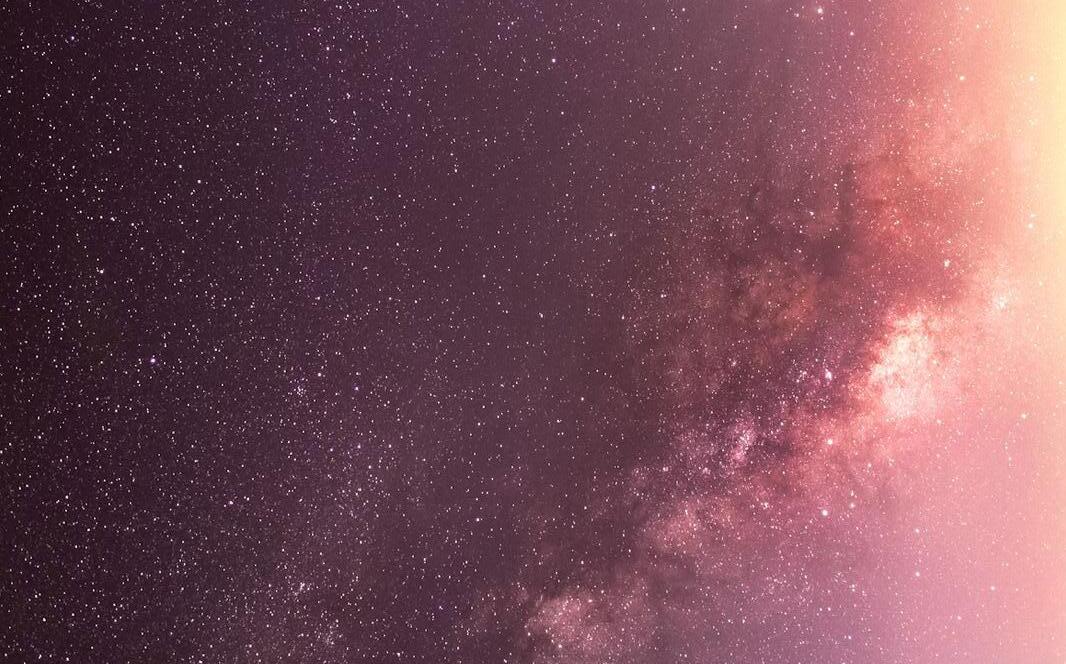Creative Director
ANISHA CHOPRA
Design Editors
AVERY WHITE KATIE KELL
Video Editors
JOHANNES PARDI
JASMIN RHYMES
Managing Photo Editor
JEFF WAGNER
Standford Lipsey Student Publications Building 420 Maynard St, Ann Arbor, MI 48109
BOBBY CURRIE Editor-in-Chief ERIN CASEY GRACE DONNELLY Co-Publishers
Marketing Director OLIVIA WIMPARI
Print
CERIDWEN ROBERTS JULIANA RAMIREZ
COLLIVER
Operations Director TEMMIE YU
Digital Fashion Editor ELENA SHAHEEN Digital Features Editor TESSA VALERA-CASTRO
Digital Content Editor HANIYA FAROOQ
Events Coordinators
ALIA GAMEZ
SAM TANDY
Digital Photo Editor NIAH SEI
Communications Coordinators ANA CANO CYNTHIA QIAN
Finance Coordinator KATIE BURGIN
Beauty Team
Miles Hionis, Marguerite Smith, Ana Cano, Krystal Salgado, Ella Graeb, Margaret Mckinney, Gretchen Brookes, Adrienne Feige, Camille Naves, Yun-Hsi Chiang, Sravya Davuluri, Chelsea Ohaka, Eddy Holcomb, Jiyu Moon, Gabriele Shepheard, Ally Wang, Elizabeth Wolf
Design Team
Katie Kell, Avery White, Isabella Schneider, Story Triplett, Cornelia Ovren, Ashley Turner, Caroline Kegg, Chloe Bratton, Jaycee Mitchell, Sasha French, Jasmine Barnes, Ava Anderson
Fashion Team
Ceridwen Roberts, Juliana Ramirez, Elena Shaheen, Micah Webster-Bass, Sally Jang, Porter Selfridge, Jared Ruffing, Anika Lopes, Amelia Kocis, Ella Graeb, Gloria Yu, Hana Farooq, Kaavya Chavan, Christine Kim, Reagan Hakala, Paige Tushman, Mary-Katherine Acho-Tartoni, Jessica Kroetsch, Subin Yang, Anise Kruse, Samuel Cao, Jeffrey Wagner, Emilio Rodriguez, Jessica Au, Emma Blair, Anjani Patel, Auburn Marriott, Hannah Ruffin, Rita Hajjar, Zachary Sebestyen, Madison Knowlton, Jillian Van Stee, Lucy Smith, Chelsea Ohaka, Mya Weiss
Photography Team
Kaelin Park, Margaret Whitten, Niah Sei, Ava Muntner, Kamryn Washington, Chloe Kiriluk, Isabella Possin, Lane Liu, Zhixian Xiong, Jaden Moxlow, Esther Tirat-Gefen, Hannah Ruffin, Bridgette Bol, Shravya Ghantasala, Aria Zhou, Lilly Vydareny, Bee Whalen, Tania Rodarte-Escobedo
Digital Content Team
PARK MARGARET WHITTEN
Print Beauty Editor MILES HIONIS
Digital Beauty Editor MARGUERITE SMITH
Social Media Coordinators CHRISTIAN HERNANDEZ MACKENZIE RADLE
Haniya Farooq, Katie Lee, Katelyn Knickerbocker, Hannah Hoang-Pham, Nethra Vijayakumar, Felicia Wang, Ashley Xu, Jessica Yang, Sydney Emuakhagbon, Kiana Pandit, Irem Hatipoglu
Video Team
Johannes Pardi, Jasmin Rhymes, Sydney Seifert, Olga Brazhnikova, Chloe Kiriluk, Kaelin Park, Felicia Wang, Samridhi Sharma, Naimah Perez, Elsa Pasquariello, Zoe Sage Tracey, Eesha Gummaraju
Communications Team
Cynthia Qian, Ana Cano
Events Team
Alia Gamez, Sam Tandy, Alexis Bell, Colin Pfeifer, LeAnh Vong, Mallory Ensing, Megan Myrick, Renata Perez Rosillo, Sathvika Ravichandran
Social Media Team
Christian Hernandez, Mackenize Radle, Mackenzie Jackson, Renee Bourcier, Jaden Johnson, Carolyn Lira, Reagan Hakala, Genevieve Jones
Finance Team
Katie Burgin, Aubrey Heaton, Megan Dobie, Ryan Zimmel, Malini Fisher, Iliana Chevres
Features Team
Marxie Colliver, Tessa Valera-Castro, Iris Ruffing, Avery White, Isidora Purrier, Lane Liu, Avalon Ring, Makayla Whitsell, Emerson McKay, Emma Edmonson, Enia McLaughlin, Raymond Zou, Ana Sharshar, Ashley Turner, Bianca Done, Emma Blair, Mimi Vu, Lola Post, Abby Weinberg, Sara Wong, Bee Whalen
AsI sit down to introduce our October Digital issue, can’t help but feel like a single star in the vast constellation of SHEI’s legacy.
In a world of constant chaos, it always helps to take a deep breath and look to the sky. Gazing at the infinity of stars, planets, and galaxies that exist past our own grounded world of rock and water, I take comfort in knowing that my own concerns are just some amongst trillions of others. As we glance through our telescopes into the night sky, see a connection between the very nature of our human values to those of the cosmos. We see beauty through the glimmer of stars, imperfections in the bumps and crevices of craters, vivid coloration through the warmth of Jupiter contrasting the iridescence of Mercury, and the androgyny of editorial fashion with the soft effeminacy of Venus and the rough masculinity of Mars.
The October digital issue, “Aether,” explores the connection between our vast universe and its relation to the ethereality of mythology. Aether refers to the primordial god of the upper sky, and our SHEI digital creatives explore this vastness of the heavens and its mythical counterparts with only the limits of gravity and their own human imagination tethering them down to earth. As a high-fashion editorial magazine, SHEI continues to pride itself on pushing past our creative limits with each issue; with each tilt on our axis. hope you enjoy, as you transcend into the world of “Aether.”
Whenin need of inspiration, I look at the moon, the stars, and everything above me. The thought that something so limitless, so unknown, so desired to be understood resides right over my head is fascinating and incites my curiosity. This enchantment with the world of outer space can be seen everywhere from popular films, to fashion runways, and now to SHEI the realms that once seemed so distant have now been turned into spaces for imagination to flourish.
This edition’s theme is a reference to Aether, the Greek primordial god of light, who with his ability to create anything he can think of can be seen to represent the energy that makes up our universe, connecting us all via the speed of light traveling through space. This connection is one we at SHEI want to hop on to and see how our team’s reimagined views of planets would fit in the landscape that is our solar system. Like the god Aether who had the ability to create something new from an already existing idea, our features writers took the cosmic aesthetic and made their own discoveries, going on to write deep dives on humanity’s desperate search for the divine beauty in constellations, insights on artists that got forgotten in the vastness of our galaxies, and much more for you readers to discover.
Wherever you choose to start your journey, we at SHEI invite you to ride the Aether’s speed of light with us. As you’re scrolling through this issue and selecting which path you would like to follow, I hope you find something worth venturing for, but if not, I have faith that you’ll at least land somewhere among the stars.
Bobby Currie Editor-In-Chief
Tessa Valera-Castro
WRITER
When I want to look at the moon and stars, my first tendency is not to go outside and look up but rather to seek asylum in the celestial worlds of my favorite media. I don’t want to stand in my backyard, squinting to see the distant outlines of otherworldly shapes. Instead, I crave immersion in these worlds with millions of possibilities different from my own, my screen is my telescope, allowing me to search amongst artificial sets and elaborate costumes, to find far away stories to jump into. My first exposure to these genres, and my first media love, was “The Chronicles of Narnia”. Within the film’s impossible world of snow and ice, Jadis the white witch, brought this mystical feeling to life, with everything from her spiked crown to her snow covered eyelashes. It is no coincidence that the character of Jadis was a humanoid, a living being of different origin, attempting to pass as human. This fascination with other beings has driven me deeper and deeper into the transportative worlds of different stories, each one making me want to explore further.
For decades, stylists have worked to bring these celestial aesthetics down into our world through film and other media. Space-age fashion was prominently introduced to audiences through the 1968 Sci-fi film “Barbarella”, starring Jane Fonda and with costumes designed by Paco Rabanne. Rabanne was often viewed as a leader in space-rending fashion trends. Through inspirations from global obsession with the moon landing, he employed a unique lineup of materials in his work, including plastic and metal, which render a futuristic feel that could only possibly exist in a world far far away. They bring to mind ideas of machines and innovation, both which are necessary in order to take man to the moon and beyond. Other aspects about these styles such as the sparkles and shine, represent a world
ABBY WEINBERG
GRAPHIC DESIGNERS
KATIE KELL
AVERY WHITE
where everything is bigger and bolder, another aspect that as humans, we are always looking to become.
Following this trend, science-fiction designers in the late 1990s and early 2000s crafted elaborate pieces, all resembling space in some way while simultaneously drawing the audience’s imaginations to the future. The use of materials such as metal and aluminum carried on, as well as the play on shape and form to craft a celestial feel. These styles are best seen in the many iconic looks of Padme Amidala, who, in the “Star Wars” prequels, brought space-fashion to screens everywhere with her flowy metallic dresses and futuristic headwear. Combining these gorgeous space designs with a courageous and intelligent space leader like Padme drew viewers deeper into the world of Star Wars, offering an escape from Earth and inviting them to a realm where the possibilities are endless. Traveling across planets and following her lover through his descent into madness, her character symbolizes hope of salvation and ultimately, love, to save both the universe and the man she loves. Using such planet-transcending styles on her character creates the association of a powerful, godly being. Given her role in the story, as Anakin’s last chance at overcoming the Dark Side, these looks highlight her power, as well as her ethereal grace and kind spirit.
Despite the foreign nature of these styles, we crave them because they allow us to peek into alternate realities. In the same way that we imagine ourselves as princesses and princes when we are kids, we use fashion as an imaginative escape within our adulthood. In more recent science-fiction additions to Hollywood, audiences marvel at films such as 2017’s “Blade Runner 2049”, or the Dune-
remake series and feel themselves drawn into their orbit. The outfits displayed in these films may be less fantastical, with no poofy shapes or glowy sparkles, but their use of harsh lines and silhouettes, as well as industrial materials, crafts a futuristic feel all the same. New science-fiction movies such as these have proven that space fashion, much like our knowledge of the universe, is ever-growing and developing. Given this, it is only natural that our characters and their costumes will look a bit different too.
Space-age fashion began as a way for designers to reflect real explorations happening up in the sky. The idea of humans exploring the ether was (and still is) exciting and gives us hope that there is more out there than we know. Continuing to project space fashion into fantastical places encourages this hope, and fascinates us with the alternate possibilities and theories that could prove to be true. Not to mention, it gives even more allure to the characters of our
favorite space-age stories, dressing them head-to-toe in celestial charm. While it is unlikely that Darth Vader is out in the universe, wreaking havoc and terrorizing planets, it is never impossible, and the beauty of not knowing makes our imaginations that much greater.
SHOOT DIRECTOR
REAGAN HAKALA
PHOTOGRAPHERS
LANE LIU
JADEN MOXLOW
STYLISTS
SALLY JANG
MADISON KNOWLTON
BEAUTY
ELLA GRAEB
EDDY HOLCOMB
VIDEOGRAPHER
ZOE SAGE TRACEY
GRAPHIC DESIGNER
ASHLEY TURNER
MODELS
XOCHITL VEGA
AUBURN MARRIOTT
MOON memories of the
Like a light shining through the darkness of night, the moon guides humanity’s hand in creativity, knowledge, and healing. Since the dawn of time, it has lingered above us–calm, constant, and watchful. It continues to shape the tides and stir the hearts of dreamers. Poets have written sonnets to its glow, lovers have whispered secrets beneath its gaze, and philosophers have looked to it for meaning beyond our mortal grasp. The moon has watched over us for millennia, a companion in solitude and a witness to our greatest triumphs and fears. Across cultures, it has become the muse of countless stories and traditions; a symbol of renewal, femininity, mystery, and change. Whether seen as a goddess, a guardian, or a reflection of ourselves, the moon continues to glisten above, reminding us of the beauty that thrives even in darkness.
In the North, the moon took a masculine form. Máni, the Norse personification of the moon, drove his chariot through darkness beside his sister, Sól, who steered the sun. Together, they were keepers of the sky. Their paths marking the rhythm of time: the waxing of months, the pull of tides, and the quiet order of the night. Máni gifted early peoples the knowledge of time. His steady course offered a celestial rhythm that mirrored life’s natural cycles. His wisdom was intuitive and cosmic, revealing truths through patient observation. Under his glow, what,
daylight concealed came alive: dreams, visions and omens that spoke of unseen things. Máni’s light embodies this rhythm, moments of brilliance followed by reflection and rest. Though not a healer by name, Máni guides the lost. Through the shadows of night, his gentle light offers clarity and calmness. His healing is poetic and inward, allowing the soul to wander, to rest, and to find meaning in the quiet. Meanwhile, in the East, the moon reflected a gentler parable of virtue and morality. The parable tells the tale of an old man who begged for food from the animals. Each offered what they could– fruits, fish, and grains– but the rabbit, knowing only how to gather grass, chose to give itself, leaping into the fire the man had prepared. The beggar revealed himself to be Śakra, a lord of heaven. Moved by the rabbit’s compassion, he placed it upon the moon for all to see. There, the moon became a celestial palace, and the rabbit an eternal apothecary, forever pounding herbs with a mortar and pestle. Some say it prepares the elixir of immortality; others believe it grinds medicine for mortals. Its tireless work reminds us that healing is never complete, but a continuous balance between body, spirit, and time. Artists, poets, and storytellers keep the rabbit’s image alive as a reflection of compassion, sacrifice, and care. Through its gentle labor, the moon reveals another kind of light: one that nurtures
from afar, reminding humanity that even in stillness, there is devotion.
But where myths live, superstitions grow. By the Middle Ages, the moon was said to stir madness or “lunacy.” Its full form fanned the flames for tales of transformation: werewolves, witches, and restless souls; beneath these fears, however, was fascination. Communities continued to live by its rhythm: farmers planted and harvested by its light, barbers snipped hair under waxing moons to ensure strength and growth, and healers timed remedies to its gentle pull. Even now, we speak of “cutting away the old” beneath a waning moon, as if trimming the edges of our old struggles for new growth. Today, our understanding of the moon is not quite the same, but our devotion endures. We no longer weave whimsical tales or live by its phases, yet we still honor the moon, only now with a modern touch. Some keep to older traditions, crafting moon water beneath the night sky to absorb lunar energy and align their intentions with its cycles. Others mark its phases through apps, capture its beauty through photography, or wear it inked upon their skin as a symbol of change and return. In many ways, our connection to the moon has grown more distant. It once guided our time, our harvests, and our myths; now it serves as an aesthetic inspiration, admired for its beauty but rarely felt as a living force. We have learned its science,
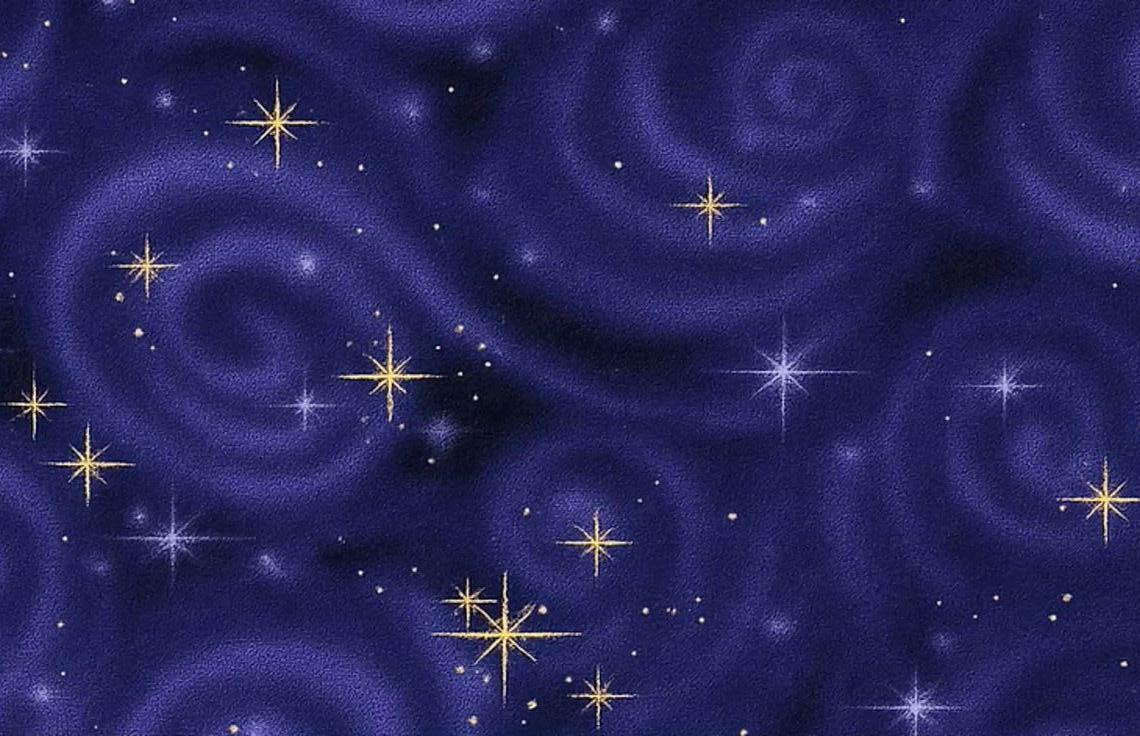
WRITER
MIMI VU
GRAPHIC DESIGNER
CHLOE BRATTON
therefore it has lost its mystery. But even in this modern gaze, something ancient remains: a quiet admiration and a desire to look up to find more meaning from its light. The moon continues to mirror us not through stories of gods or rabbits, but through the reflections we project onto it, each one a small homage to our companion.
French designer Marine Serre’s signature is in a crescent, inspiring a mysterious and elegant bag, known as the Eclips. Moon phase jewelry, too, has risen in popularity. Each pendant is a personal talisman, marking births, heartbreaks, and moments of clarity. Brands like Moonglow turn memory into light, imprinting the moon’s phase from any given date so that a wearer might hold their own small cosmos close to the skin.
Even society’s collective style seems drawn to the lunar essence, with soft metallics, pearlescent shimmer, and silvers that catch light just enough to suggest magic. Beyond trends and talismans, there remains something human in our ongoing entrancement. Illumination comes in all phases, not just when it is full. In an age of artificial light, the moon’s quiet glow still feels sincere.
To trace the mythology of the moon is to trace our own past, present, and future. Whether god, goddess, guide, or logo, the moon remains what it always was: a witness to our becoming.
Complex
n ancient myth, Cassiopeia was a queen undone by her reflection. Known for her beauty and her arrogance, she boasted that she and her daughter were more beautiful than the sea nymphs. Her vanity enraged the gods, who as a result punished her with immortality, fixing her into the sky as a constellation. There she remains, bound to her throne and turned upside down, spinning endlessly around the north star. What could be more haunting than beauty made eternal, but never through its true intentions? Like Cassiopeia’s tale, fashion, too, revolves around the tension between our obsession with beauty and our retribution of arrogance. Every glimmer on the runway, every magazine spread, carries the weight of Cassiopeia’s punishment — a reminder that women who shine too brightly are still at risk of being turned upside
In the original myth, Cassiopeia’s crime was not the usual cruelty or betrayal, but self-admiration. Her words, claiming to have beauty greater than that of the gods, were an act of ignorant pridefulness, and to restore balance, Poseidon condemned her to the sky. That celestial image, forever visible, yet forever humiliated, captures a paradox that still defines the human relationship with beauty. We celebrate it as power, yet fear it as corruption, longing to possess it while distrusting those who do. Cassiopeia’s glory became her shame. Her eternal presence is both divine and damning. Through centuries, artists and astronomers have read her constellation as a symbol of vanity being penalized. To be seen, it seems, is to risk falling.
Fashion has always been like Cassiopia’s mirror. It became an art form built on admiration and accusation. Designers often play with this tension, using materials that literally reflect the viewer back at themselves. Mirrors, sequins, metallics, and liquid silks transform the human body into a
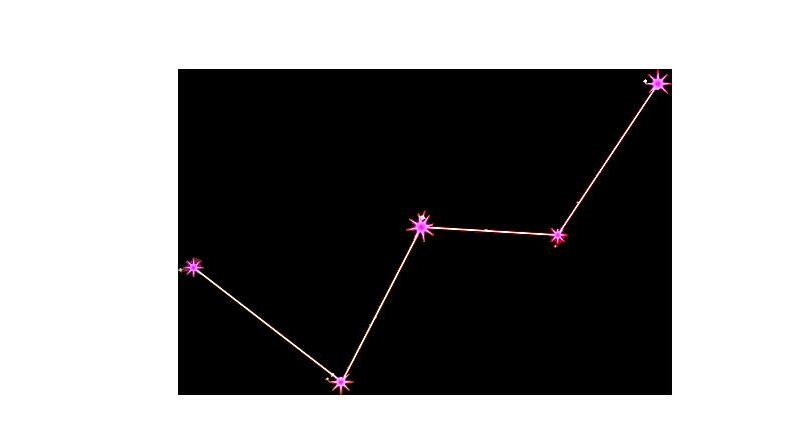
celestial object. Think of Iris van Herpen’s sculptural designs: garments that mimic galaxies, seashells, and light itself. They blur the line between human and cosmic, inviting in both awe and discomfort. Or Schiaparelli, whose golden faces and mirrored corsets turn the wearer into muse and monster. In these designs, beauty becomes performance and expression becomes spectacle. The wearer is meant to be both adored and judged at once — like Cassiopeia, both throne-bound and inverted under public gaze. And still, designers and audiences alike chase that same impossible glow, willing to spend fortunes, undergo procedures, and bend reality itself to touch a beauty that was obviously never meant to be possessed.
The runway, too, functions as a kind of orbit. Models loop around the stage, spotlights follow them, cameras flash. Each rotation brings about fresh applause as the next model is faced with worship and exposure. And the next day, another collection, another Cassiopeia to marvel at and destroy. Trends rise and fall in predictable cycles, forever chasing an elusive ideal — a perfection that, once found, immediately begins to fade. Each season promises reinvention, yet everything returns, slightly altered and slightly shinier, like the queen endlessly circling her throne in the sky. Even the industry’s obsession with “newness” is self-reflective.
Beneath the mirage, fashion’s orbit is powered by production and perception. The same rotation that keeps ideas fresh also feeds an economy built on constant consumption. Designers are expected to outdo themselves season after season, and audiences are conditioned to crave the next thing before the last has even settled. What was once a space for art and self-expression now doubles as a feedback loop between creativity and commerce. The cycle isn’t only aesthetic, it’s industrial, too. Each “reinvention” depends on labor, marketing,
and the illusion of progress. In that sense, the runway doesn’t just circuit around beauty, but around attention.
That hunger for approval extends far beyond the runway. The same system that rewards innovation also punishes visibility, especially when it comes to women themselves. Women who dare to love their reflection too openly risk being cast as Cassiopeia — admired, then condemned. Media and fashion often draw that line between confidence and conceit with deliberate cruelty. The same woman celebrated for her beauty one day can be mocked for being “too into herself” the next. Social media intensifies this double bind, turning adoration into performance. Self-love is applauded through likes and comments, and yet the moment it looks like selfadoration, it invites ridicule. We’re told to be confident, but not too confident. We are meant to glow, but not outshine. It’s a cultural fear of women who see themselves clearly and dare to be their own muse. Cassiopeia’s sentence lingers in every viral headline about arrogance and every photo dissected for signs of vanity. To gaze at oneself without apology remains an act of rebellion.

In the end, both beauty and constellations share a kind of divine distance. Stars, like style, shimmer beyond our grasp. To love beauty is to love something transient yet timeless, like a light that flickers and endures. Cassiopeia’s story reminds us that every reflection carries risk. Yet, maybe that’s what makes it worth pursuing. There is always a chance to shine, even if only for a moment.
JASMINE
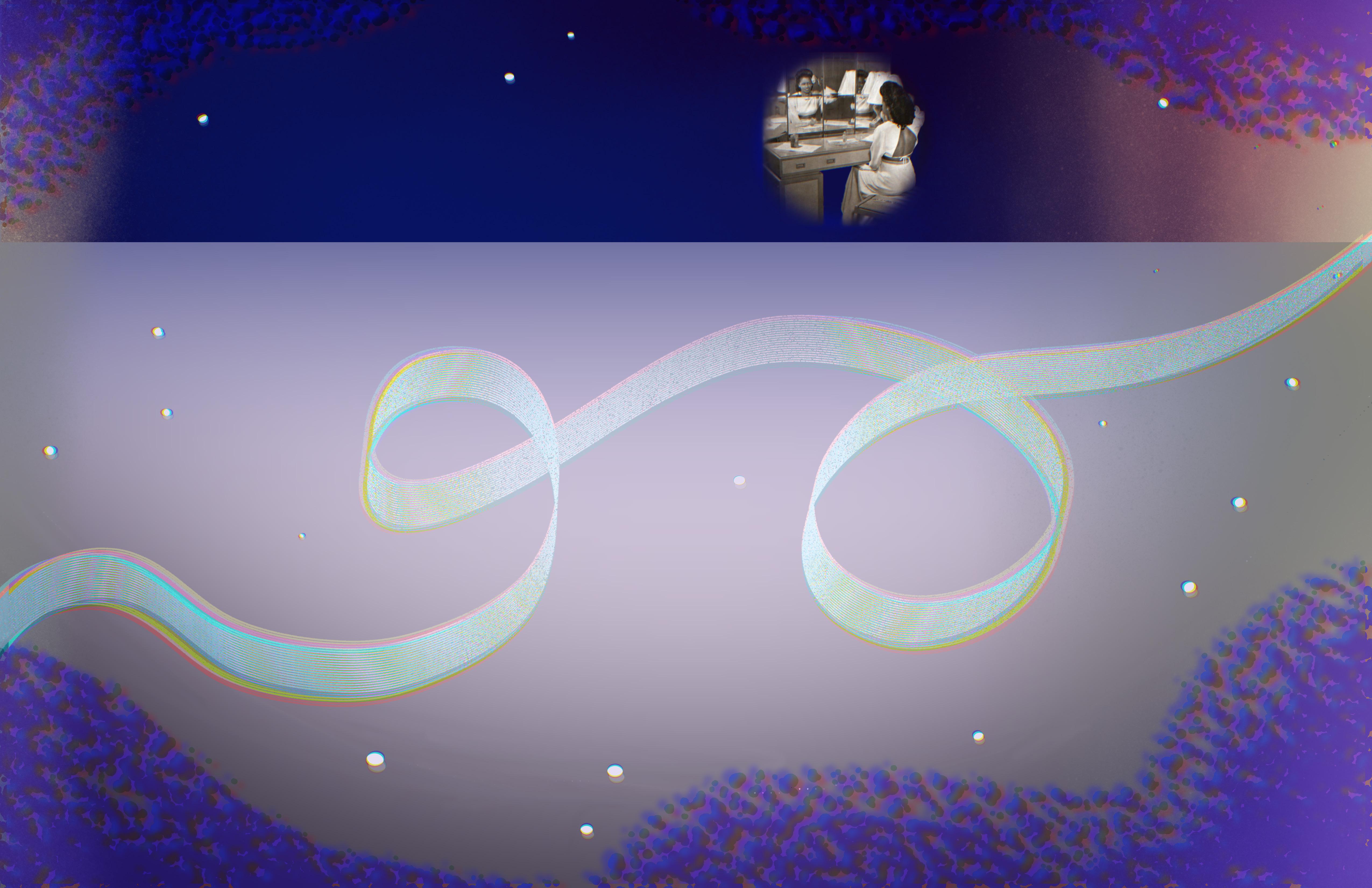
In 2006, the former planet Pluto was demoted into a dwarf planet due to its incapability to fit the rules that defined a planet. In a similar fashion, clothing designers, who like planets have a system of their own, need to abide by the rules of that system in order to be categorized as influential, legitimate, and worthy of recognition. Some of the most well-known fashion influences were representations of Pluto’s unique path, they played with colorful fabrics in ways never seen before, experimented with denim, sequins, and leather , or sewed patterns of cheetah and lace, all alluding to creating their own lane and finding ways to stand out amongst the solar system. Orbiting doesn’t exist in the fashion world, you need to do things on your own accords. Yet, there remains limits on who or what can be defined as a Pluto. Political power and social contexts often fail to praise those who truly work outside of the system. Sometimes, you can orbit too far for comfort, often in the context of race, gender, and the questioning of who is in power. But, what happens when the depth of your impact goes unnoticed? Are you still influential?
An emblem of Pluto can be seen in Lois K. Alexander Lane, a Black fashion designer who worked primarily through the 1940s and early 1980s. Born in 1916 in the deeply divided city of Little Rock, Arkansas, Alexander-Lane’s spark for fashion began through window shopping against the window
panes of segregated stores. She daydreamed and sketched designs she desperately desired access to. In pursuit of identity and further knowledge of fashion, she obtained a masters degree from New York University in 1963 with a thesis titled, “The Role of the Negro in Retailing in New York City from 1863 to the Present” The thesis focused on exposing the limited beliefs catered to the Black experience within the New York fashion landscape. Alexander-Lane understood the desire Black people had towards custom clothing, a luxury rarely offered at the time, which influenced the opening of multiple boutiques in D.C. and New York.
Although she worked tirelessly to inform the world about how the Black community has been and will continue to be involved in the fashion world, she needed a way to bring it to life. In 1966 AlexanderLane took a new step into the Black fashion world with the grand opening of the Harlem Institute of Fashion. The school graduated over 4,500 students who took two courses specializing in dressmaking, millinery, color, and design. This tuition free fashion school allowed Black people to develop their skills in a safe, creatively enhancing space. In addition to the school, Alexander-Lane founded the Black Fashion Museum in New York City, dedicating her life to collecting garments, and accessories connected to the roots of Black fashion. One of her biggest goals in mind was to rewrite the image painted of






